Build
Value,
Clarity,
Flow.
Quickly Eliminate Waste
& Boost Performance
Do you know what's most affecting your organization's performance, and what to do about it?You need visibility into what's slowing you down before you can automate your way through it.Improvement needs to start where you are, so it's essential to visualize your current workflow in order to know where and how to invest.This is where Flow Engineering comes in. You'll get a clear picture of your unique value stream flow, top risks, gaps and opportunities and guidance towards your ideal future state. Ignore the unicorns, best practices and benchmarks. Let's get you improving from where you are right now.Your team can deliver faster, happier, and with less friction. Book a call with us here to see how.
At Visible, we are a boutique consulting firm dedicated to transforming the way you work.We help organizations address the complexities of scale, globalization, and the rapidly changing work environment to ensure your teams are working smarter rather than harder.Using Flow Engineering, we are able to quickly get you from problem to solution efficiently and effectively.
Are the Costs of Scale putting you in debt?
At scale, teams naturally become more distanced from the customer, from each other, from the purpose of their work, and from critical information. The critical feedback loop from customer need to team activity is stretched and broken.
The human costs of scale
Distraction: interruptions, changing priorities, demands on our attention.
Disorientation: occurs from a lack of clarity and alignment towards what matters most.
Disengagement: occurs when we resign ourselves to treading water without a clear connection to value.
misalignment in teams
Different Perspectives: even if a group of individuals are observing the same challenge, every observer will have a different perspective and understanding.
Different Goals: different people have different goals based on what they deem important at any one time.
Different Scopes: different people have different scopes of concern, wide or narrow.
At Visible, we help you rebuild that loop of effective action to clear feedback, from employee to customer, optimizing workflow and improving team alignment along.
Let us guide you to next level performance
You're in good company
Upcoming Talks & Workshops
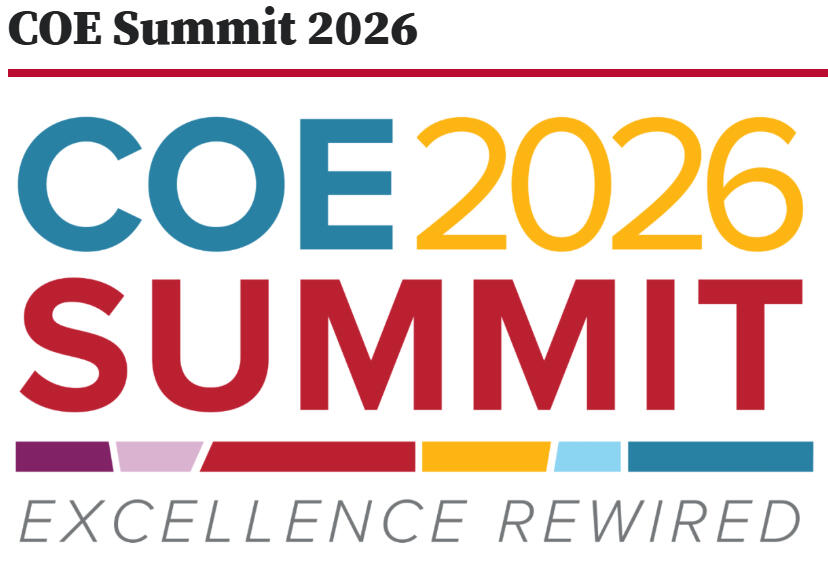
DATE: April 7-9, 2026LOCATION: Fawcett Event Centre, Ohio State University, Columbus OHTICKETS: Coming early December!ATTENDANCE: Live
Want to dive deeper into flow engineering?
Flow Engineering is a practical guide to using value stream mapping techniques to align teams, unlock innovation, and optimize performance.Based on foundations from Value Stream Mapping, cybernetics, and the Toyota Production System, Flow Engineering’s lightweight and iterative practices build the value, clarity, and flow required for effective collaboration and collective action.Flow Engineering provides a step-by-step guide for running fast-paced mapping workshops that rapidly build shared insight & action.
Now Live!
The Flow Engineering
Immersion Course
Learn how to enhance collaboration and performance in large-scale organizations through Flow Engineering—a systematic approach for identifying value, building clarity, and enabling smooth delivery across teams. This comprehensive course teaches you five powerful mapping techniques that help teams visualize workflows, uncover constraints, and implement targeted improvements. Through hands-on exercises and real-world examples, you'll learn how to:
Align teams around clear, valuable outcomes
Map and measure value streams to identify bottlenecks
Analyze dependencies that impact performance
Design improved future states
Create actionable roadmaps for change
Flow Engineering
The Program
"Flow Engineering offers approachable, flexible, and scalable practices to address the challenges of scale, visibility, and misalignment in modern organizations. By providing a simple, digital-native starting point on-ramp to effective action through value stream mapping, it meets teams where they are today: distributed, distracted, disoriented, and disconnected.With it, teams can gain a comprehensive understanding of their workflow, identify improvement opportunities, and align their efforts with the value they can deliver."
Karen Martin, Author Value Stream Mapping
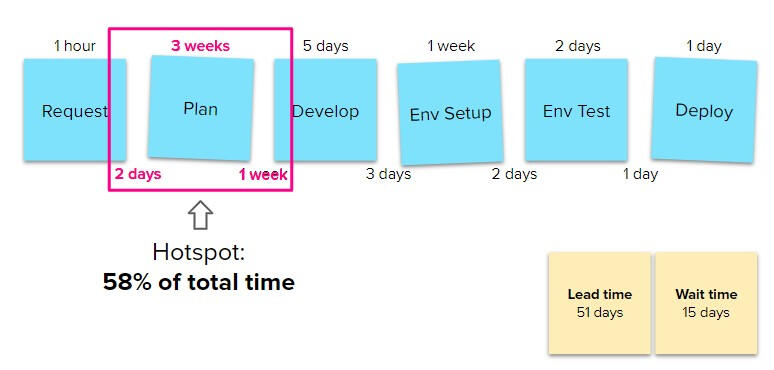
At Visible, we leverage the principles of Flow Engineering to optimize organizational workflow and drive efficiency. Through collaborative mapping, we work closely with your teams to gain valuable insights and map out end-to-end workflows across the enterprise. This approach is designed to be simple to implement, adaptable to your unique needs, and quick to identify key opportunities for improvement. The result is a set of customized actionable recommendations that deliver significant, measurable benefits, helping your organization achieve smoother operations and enhanced performance.
Let us guide you to next-level performance
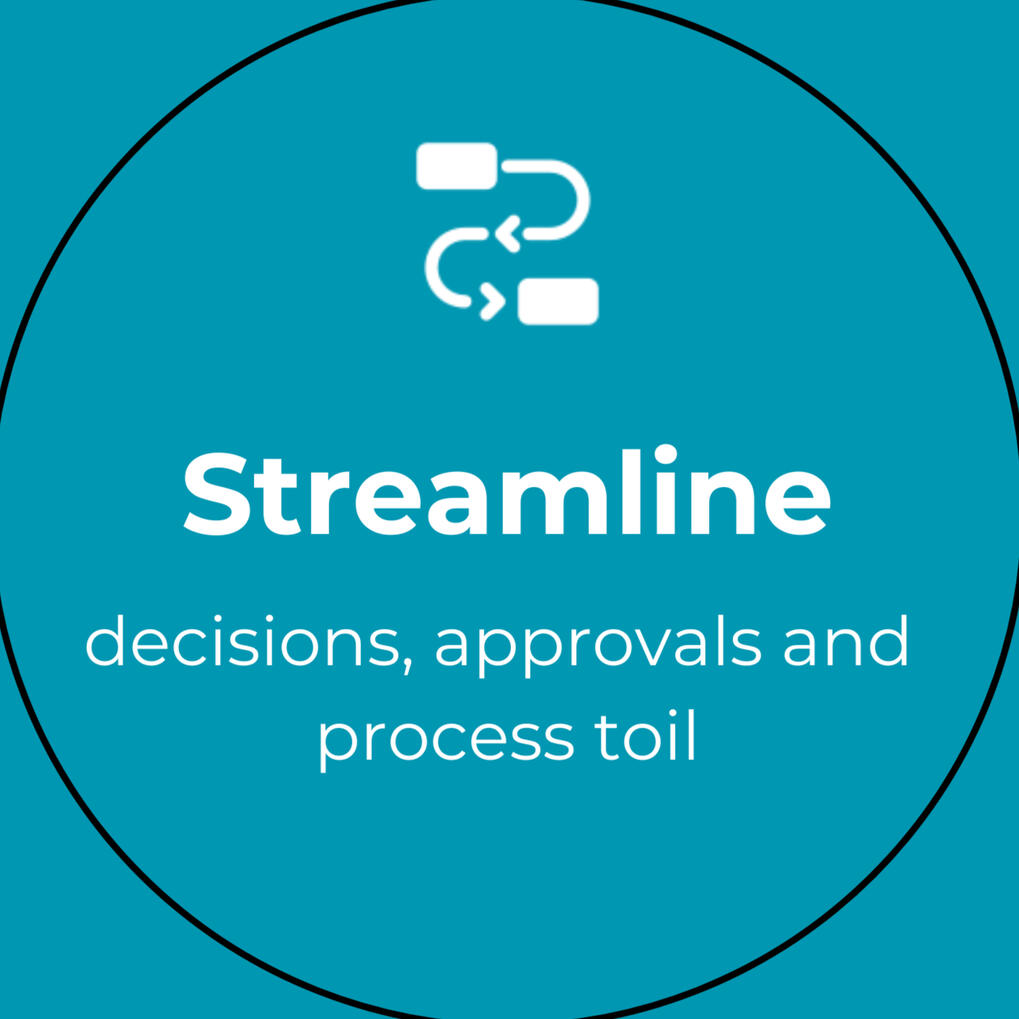
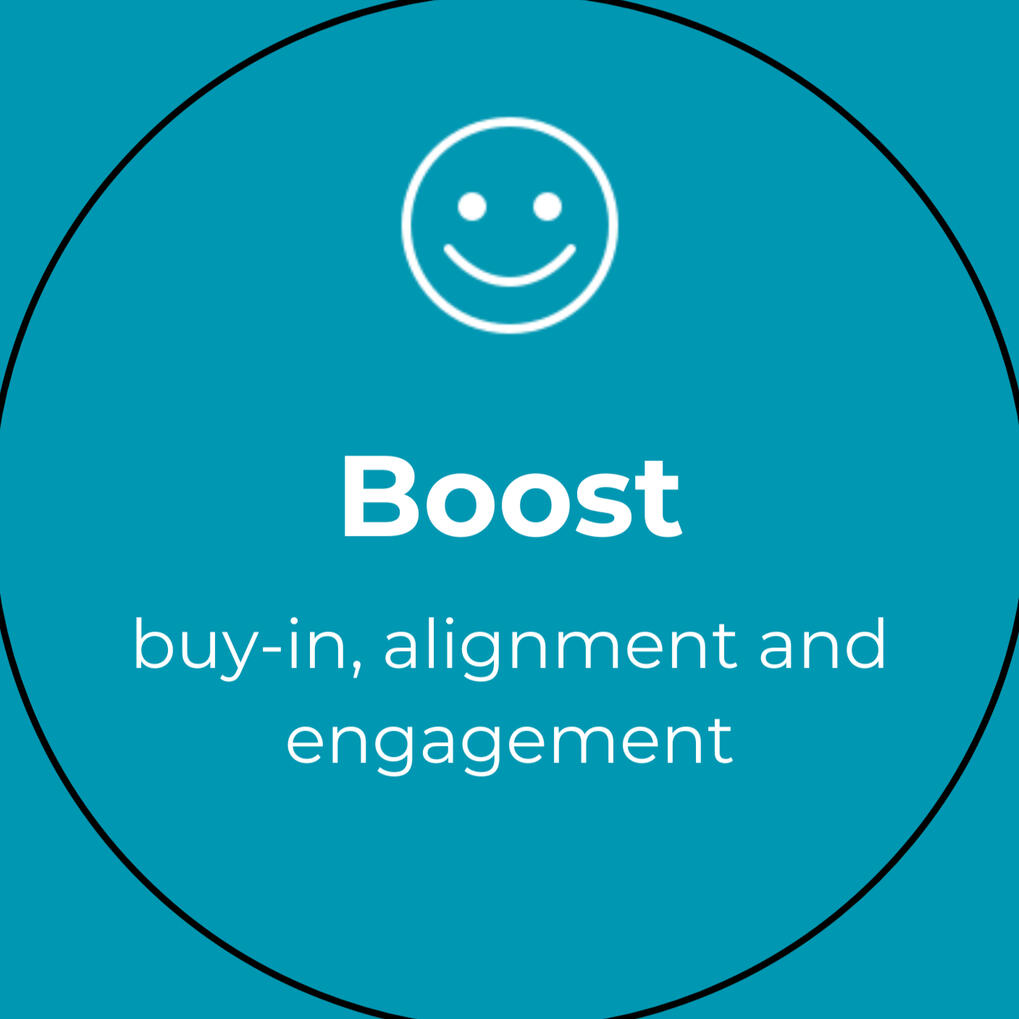
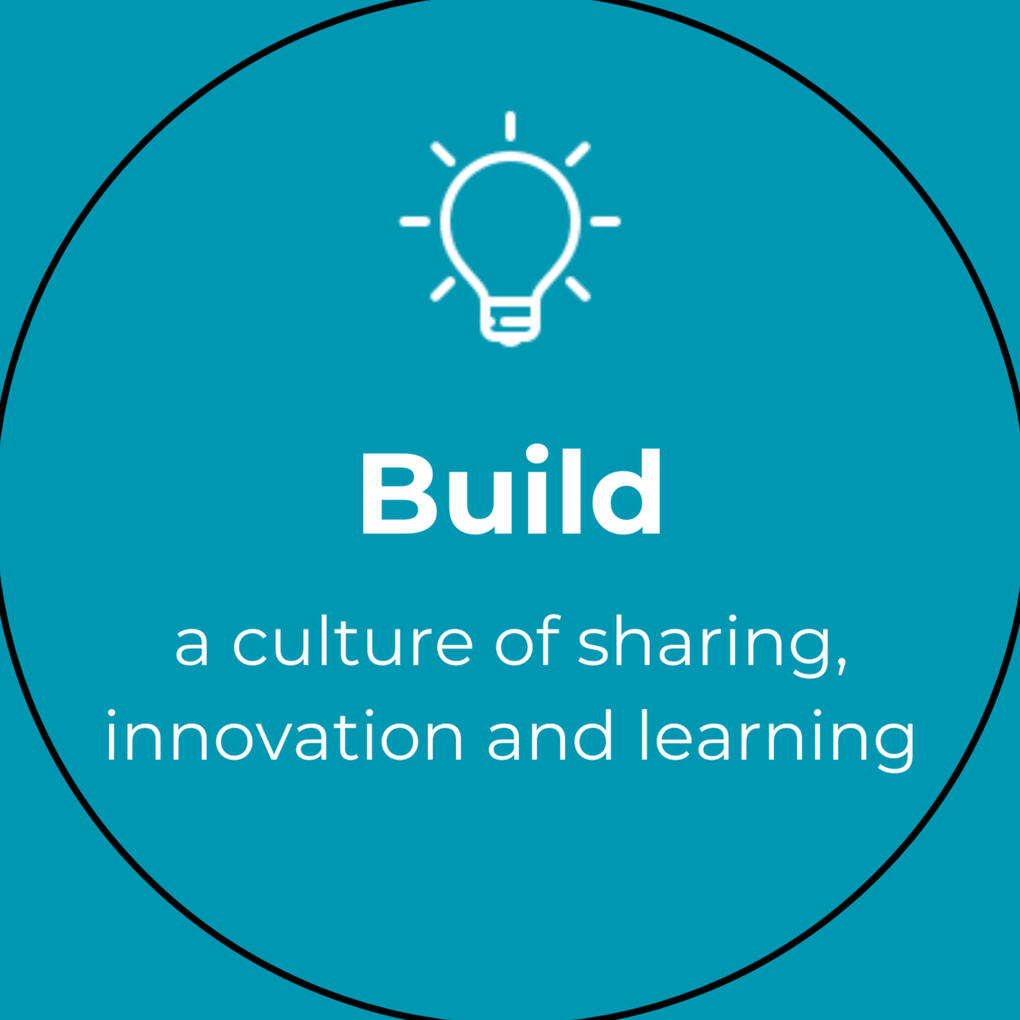
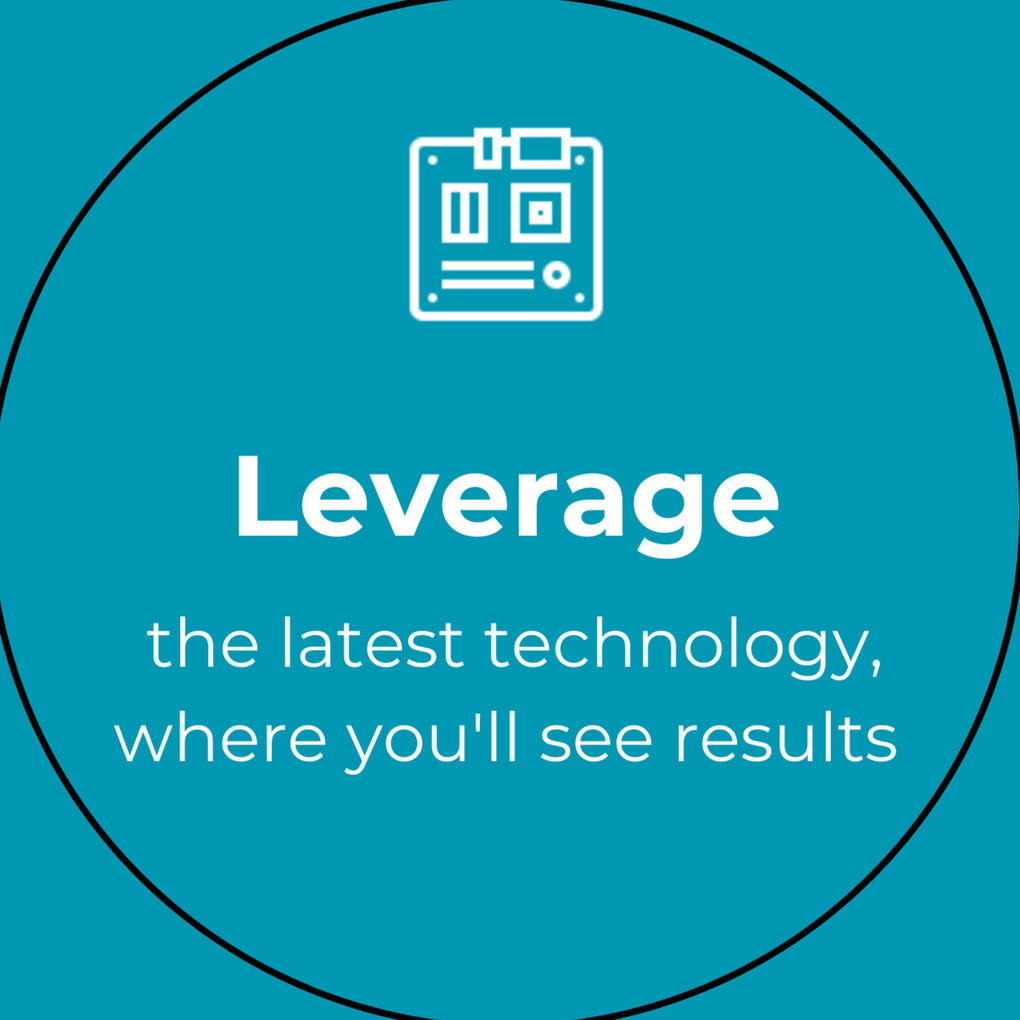
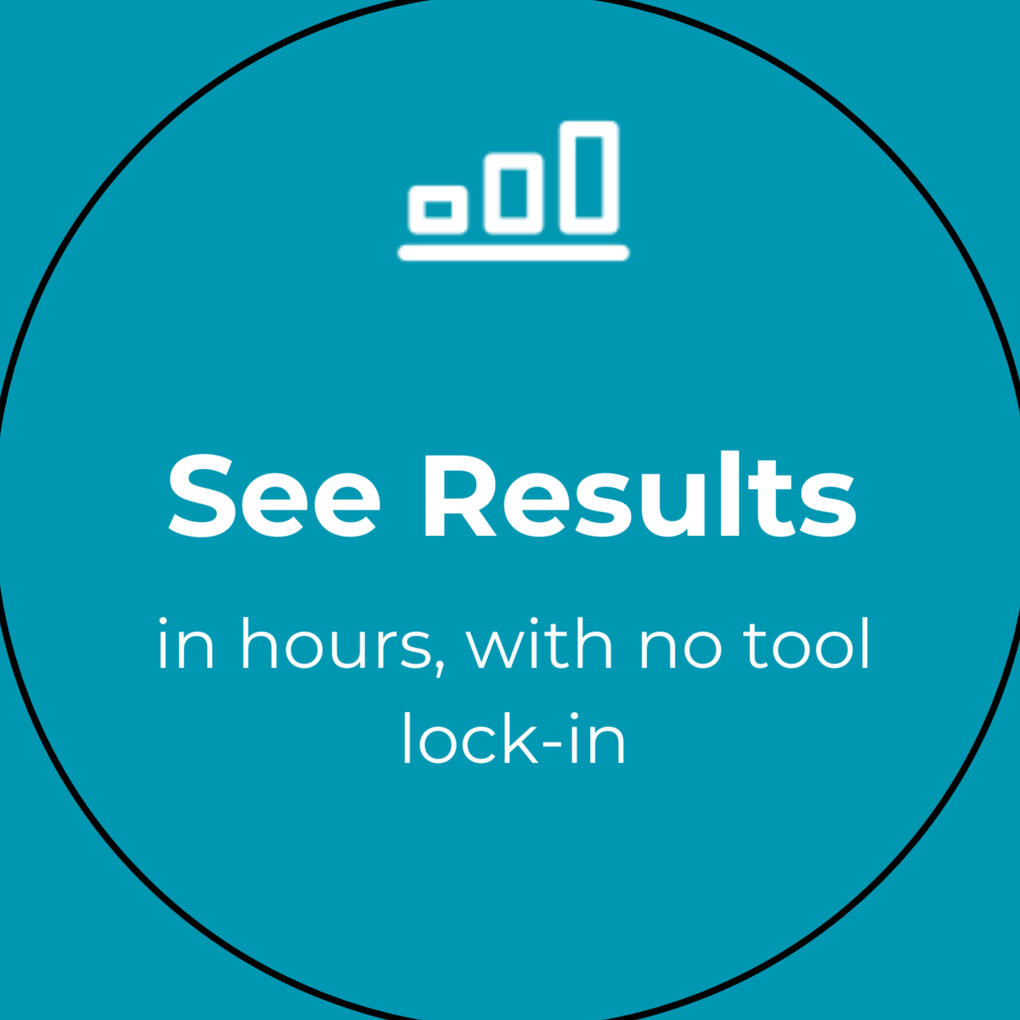
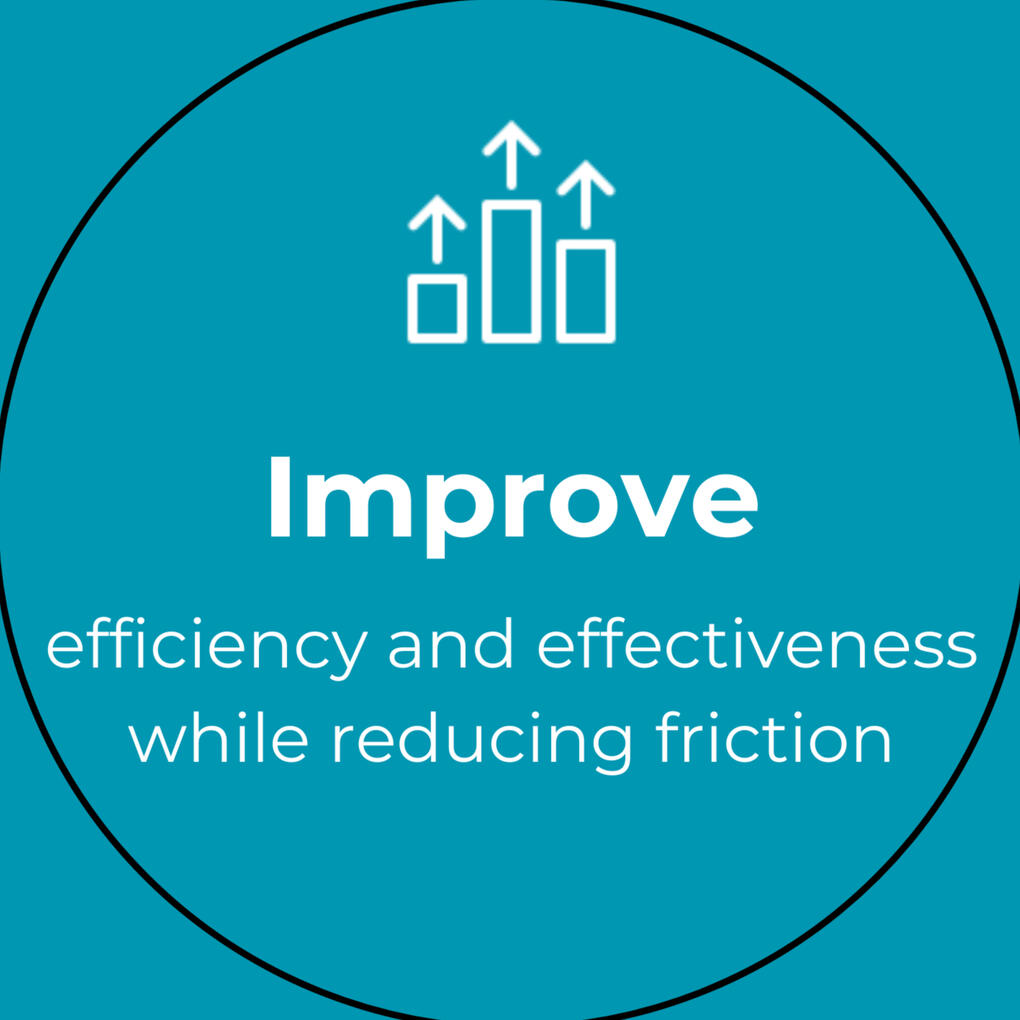
Deliverables
Flow Engineering is not a copy-and-paste methodology, which we know doesn't work. It's not a heavy framework that imposes a specific structure or operating model. It uses five different distinct maps to charter a course from your current state to a target state.
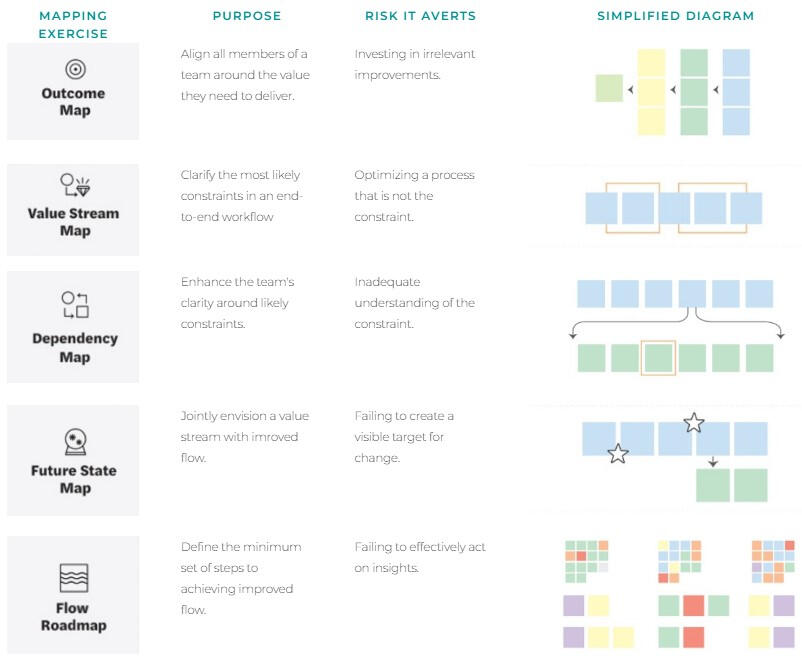
Mapping Exercise
Purpose
Risk Averted
simplified diagram
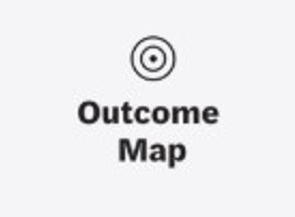
Align all members of a team around the value they need to deliver.
Investing in irrelevant improvements.

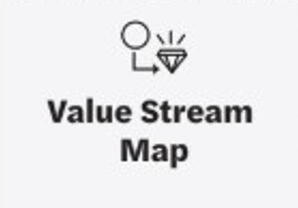
Clarify the most likely constraints in an end-to-end workflow
Optimizing a process that is not the constraint.


Enhance the team's clarity around likely constraints.
Inadequate understanding of the constraint.
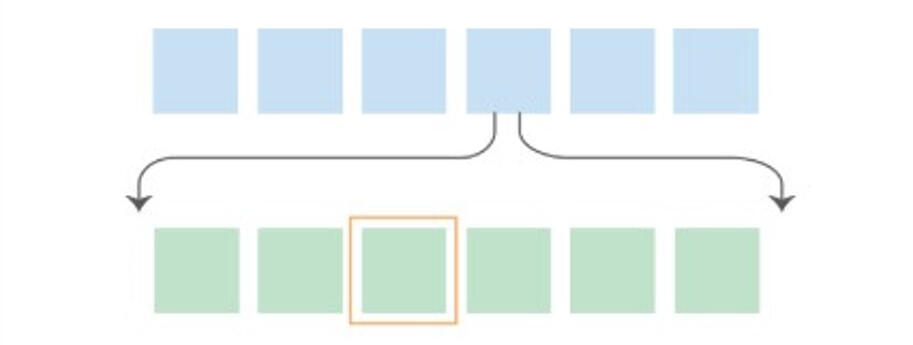
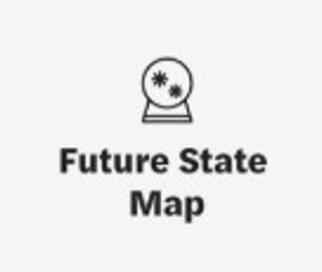
Jointly envision a value stream with imroved flow.
Failing to create a visible target for change.

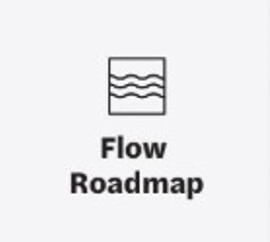
Define the minimum set of steps to achieving improved flow.
Failing to effectively act on insights.

Key Success Metrics
Time to Value: Faster delivery of measurable value.
Cost Efficiency: Reduce costs while also improving performance and outcomes.
Throughput: Value delivered iteratively and continuously.
Automation Coverage: Increase and implement automation where it matters most.
Customer and Employee Satisfaction: More value delivered faster, and a tighter feedback loop.
Risk Mitigation Success: Higher quality, lower complexity, more clarity, less rework.
Compliance Adherence: Seamless integration of compliance standards and performance.
Agility and Flexibility: Adapt quickly, focus, and visually communicate changes.
Take a Tour of the Flow Engineering Program
Flow Engineering vs. Other Techniques
Flow Engineering makes it possible to incorporate any flow-improvement techniques that can help deliver value, and provides a clear structure to layer them in. There are two main advantages that Flow Engineering brings to any practice: Initial clarity on a target outcome, and an actionable, owned, measurable roadmap to achieve the outcome.
Diving into data: Data can take months to get access to, clean, organize, validate, and correlate, and even then it’s still subject to opinion and interpretation. Even without value stream mapping, outcome mapping helps to clarify what data is most valuable, and a flow roadmap translates the data into action.
Flow Chart / Process Map / SIPOC / KPIV/KPOV / Swimlane: Flow Engineering includes measurement of timing, quality, staff and more to reveal insights about the real performance of the process and workflow being represented, but it also starts with more clarity, and ends with action.
EventStorming: More focused on technical architecture and software solution design, and doesn’t provide the same level of workflow detail. Once a constraint has been identified through Flow Engineering, EventStorming can be used to analyse the specific area affected and design a technical solution.
Flow Engineering vs. Value Stream Mapping
Flow Engineering provides a more lightweight, flexible, and outcome-oriented approach to traditional value stream mapping that is well-suited for modern digital organizations seeking to improve flow, fast. Karen Martin, the author of the canonical Value Stream Mapping wrote the foreword for Flow Engineering, and endorses it as lightweight, rapid approach better suited to getting started with flow.
Simplified and accessible approach - Flow Engineering provides a simplified, easy-to-start version of value stream mapping that is more accessible to novice facilitators and teams new to the practice.
Focus on rapid results - The Flow Engineering approach emphasizes quick mapping sessions (2-3 hours) to generate insights and enable action rapidly, rather than lengthy, exhaustive (and exhausting!) traditional mapping exercises.
Digital-native and remote-friendly - The mapping techniques are designed to work well in virtual/digital environments, making them suitable for remote and distributed teams.
Integrated with other mapping techniques - Value stream mapping is integrated with other complementary mapping exercises like Outcome Mapping and Dependency Mapping to provide a more holistic view.
Emphasis on constraint identification - There is a strong focus on quickly identifying the key constraint or bottleneck in the value stream to enable targeted improvement efforts.
Designed for knowledge work - The approach is tailored for knowledge work and digital product development contexts, rather than manufacturing processes.
Flexible and adaptable - The techniques are presented as flexible patterns that can be adapted to different team needs and contexts.
Aligned to business outcomes - Outcome Mapping ensures the value stream efforts are tied to clear business outcomes and value.
No jargon or cryptic symbols - Value Stream Mapping traditionally has a large library of symbols and terminology specific to manufacturing. Flow Engineering puts the information on the map where it naturally speaks to the viewer - whether they’re making the map, or seeing it for the first time.
Bridges business and technology - The simplified visual approach helps create shared understanding between business and technical stakeholders.
Example: "Before" Value Stream | Current state: 64 weeks at $2M per release
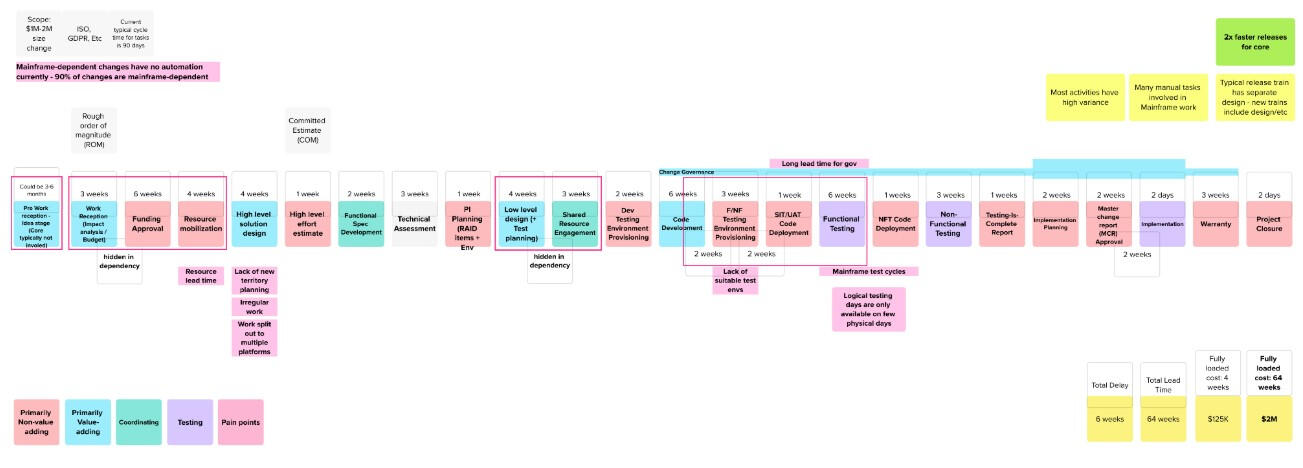
Example: "After" Value Stream | Future state: 32 weeks at 50%, $1M cost savings in year one

Where Flow Engineering Excels
Large, complex organizations with multiple teams and departments that need to collaborate on delivering value. The collaborative mapping approach helps break down silos and create shared understanding.
Situations where there is misalignment between business and technology teams on priorities and goals. Outcome Mapping helps create alignment around a clear target outcome.
When teams are struggling with inefficient processes but aren't sure where to focus improvement efforts. Value Stream Mapping reveals key constraints and bottlenecks.
Remote or distributed teams that need a way to collaborate visually and asynchronously. The digital-native mapping approach supports this well.
Organizations undergoing transformation initiatives that need a lightweight way to engage people and drive change. The mapping exercises provide an accessible on-ramp.
When leadership needs data-driven justification for improvement investments. The maps provide clear visuals to support decision making.
Onboarding new team members or integrating acquired companies, as the maps create shared context quickly.
Where Flow Engineering Struggles
Very small teams or simple processes where the overhead of multiple mapping exercises may not be justified.
Organizations with a strong command-and-control culture resistant to collaborative approaches.
Teams lacking psychological safety, as the mapping exercises require open and honest input from participants.
When there is no leadership buy-in or willingness to act on the insights generated.
Teams that are already operating at extremely high performance and flow, where the potential gains may be minimal.
Questions?
Visible is an expert improvement team led by Steve Pereira
Meet steve
Steve is obsessed with making tech human, and leveraging it to deliver continuous value.
Steve Pereira has spent over two decades improving the flow of work across organizations. He’s worked through tech support, IT management, build and release engineering, and as a founding CTO for enterprise SaaS.He serves as lead consultant for Visible Flow Consulting, where he specializes in helping large organizations improve software product development throughput and value delivery. Since 2017, he has been developing and facilitating Flow Engineering to make flow improvement in large organizations accessible, collaborative, and actionable.
HIGHLIGHTS
Transformation Obsessed
More than two Decades in Tech
Focused on Automation, the Complexities of Scale, Organizational Efficiency
Ten plus years DevOps consulting for Enterprise and Startup Teams
Founding Saas cto
Statflo (to $12M Series A, $5M ARR, 60 staff and SOC2/ISO)
Due diligence for enterprise deals in Telecom, Finance, and Retail
Salesforce ISV partnership qualification and Accelerator alum
Top 10 Great Places to Work 2018
creator
Flow Engineering co-author (2024)
The Lean Agile Way co-author (2024)
Value Stream Link (2020)
The Flow Collective (2020)
Flow Engineering Techniques (2018)
The DevOps Checklist (2014)
DevOps Toronto (2012-2019)
speaker
Steve is a passionate and dynamic speaker, specializing in Flow Engineering, who captivates audiences with innovative insights into optimizing processes and improving organizational efficiency. With a deep understanding of flow principles, Steve skillfully breaks down complex concepts, making them accessible and actionable for diverse audiences. Whether speaking to corporate teams, industry leaders, or conference attendees, Steve inspires listeners to embrace Flow Engineering as a powerful tool for driving performance, enhancing collaboration, and creating sustainable growth. With a commitment to empowering others, he continually explores new strategies to help organizations unlock their full potential through the science of flow.

Flow
Engineering
Flow Engineering 101
Map & Measure Your way to Performance
Wiring for Flow
Get Unstuck: Clear Steps for Immediate Action
Work Smarter: Small Steps for Big Change
organizational transformation
Pull: The Force Behind Our Best Work
Organizing Like the Internet
Where's The How? The Most Overlooked Aspect of Tech & Business
Systems For Success
artificial intelligence
AI for Flow
Why AI is Wasting Everyone's Time
AI Implementation Secrets
Do This First: What it Takes to Succeed with AI
At Visible our mission is continuous delivery for ambitious teams.
With workforce demands at an all-time high, optimizing efficiency is crucial for maintaining a healthy, productive, and profitable business. At Visible, we recognize these pressures, which is why our Flow Engineering program swiftly identifies and addresses the key factors hindering your progress, delivering meaningful solutions that drive performance.
What drives us?
VALUE - Our approach maximizes ROI with minimal investment. We ensure quick, actionable insights, making it easy to start and delivering results swiftly.CLARITY - We begin by gaining a deep understanding of your current business landscape. This clarity enables us to pinpoint key focus areas, prioritize effectively, and define metrics that align with your goals.FLOW - We promote continuous improvement by helping you establish sustainable processes for regularly evaluating and adapting your workflow as new opportunities arise.
About the Course
course details
Course length: 7 modules consisting of 31 lessons & 7 exercises
Estimated total runtime: 6 hours, 12 minutesLearn how to enhance collaboration and performance in large-scale organizations through Flow Engineering—a systematic approach for identifying value, building clarity, and enabling smooth delivery across teams. This comprehensive course teaches you five powerful mapping techniques that help teams visualize workflows, uncover constraints, and implement targeted improvements. Through hands-on exercises and real-world examples, you'll learn how to:
Align teams around clear, valuable outcomes
Map and measure value streams to identify bottlenecks
Analyze dependencies that impact performance
Design improved future states
Create actionable roadmaps for change
Whether you're an IT leader, manager, engineer, product owner, or agile coach, this course will equip you with practical tools and techniques to break through organizational inertia and lead transformative improvements. Join us to discover how Flow Engineering can help your teams collaborate more effectively and deliver greater value to customers. The course includes detailed instruction, interactive exercises, and expert guidance from experienced practitioners Andrew Davis and Steve Pereira. Start your journey toward better flow today.
About the Book
Flow Engineering is a practical guide to using value stream mapping techniques to align teams, unlock innovation, and optimize performance.Based on foundations from Value Stream Mapping, cybernetics, and the Toyota Production System, Flow Engineering’s lightweight and iterative practices build the value, clarity, and flow required for effective collaboration and collective action. Flow Engineering provides a step-by-step guide for running fast-paced mapping workshops that rapidly build shared understanding.Using five key maps to facilitate powerful collaborative workshops, the book shows how organizations can surface tangled process dependencies, conflicting priorities, and unspoken assumptions that grind progress to a halt. The result? A clear roadmap owned by the people doing the work to accelerate innovation cycles, optimize workflows, and achieve more effective coordination.Applicable across any industry, Flow Engineering’s techniques have helped leading organizations improve critical workflows like customer onboarding, product development, and hiring.It’s time to stop trying one-size-fits-all frameworks to improve culture and performance. Flow Engineering meets your organization where it’s at and shows you how to move it where it needs to go.
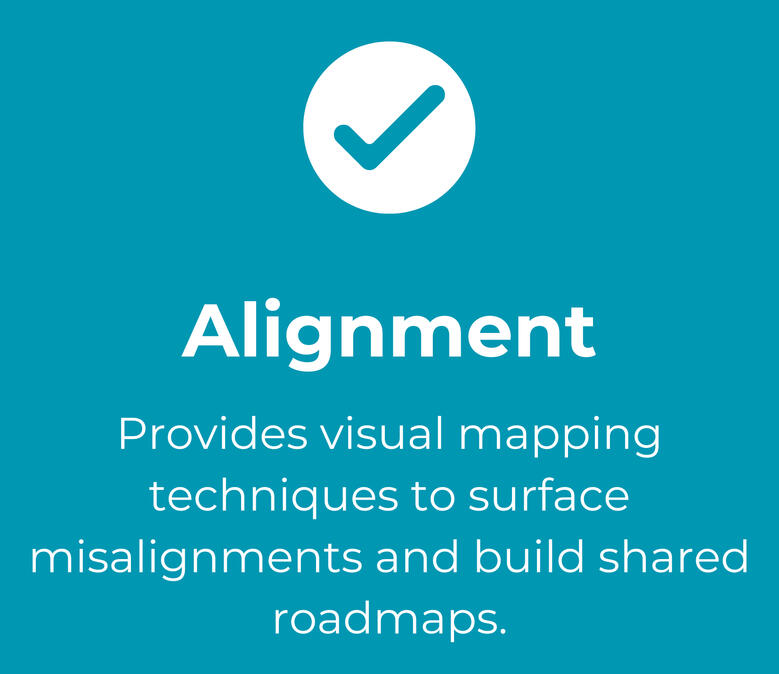


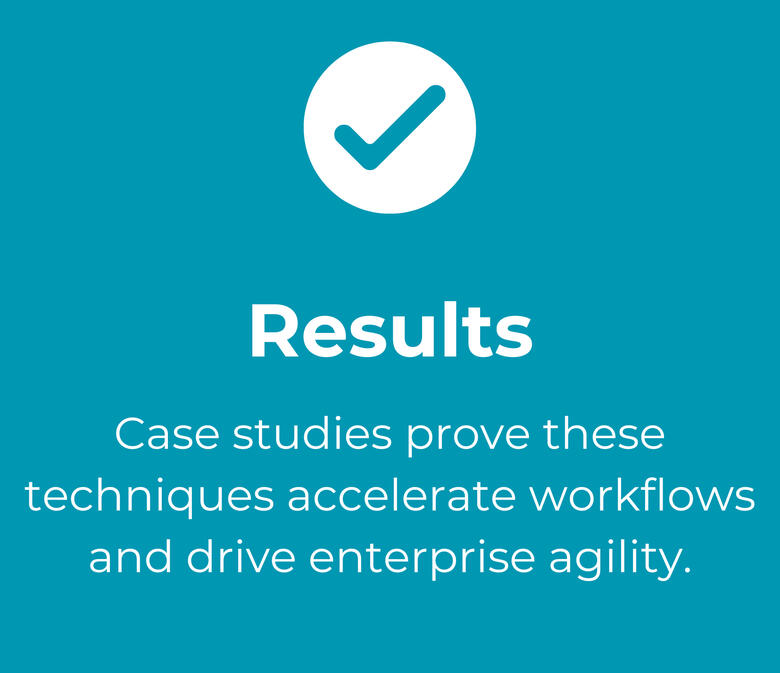
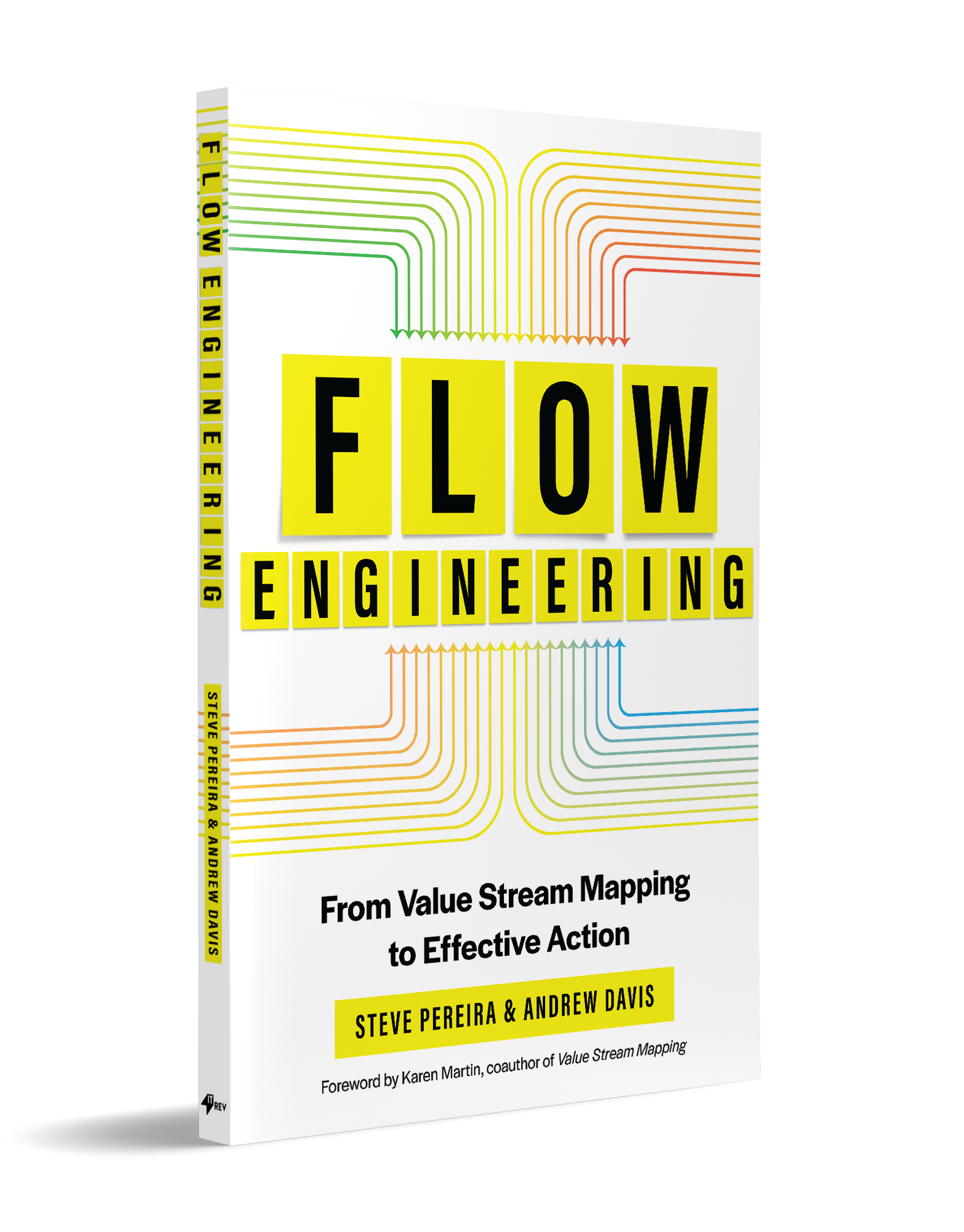
Chapters
List of Figures | Foreword by Karen Martin | Introduction
part 1 The flow landscape
The Problems with Scale
Solutions to Scale
The Elements of Action
Flow Engineering
part 2 mapping the landscape
Outcome Mapping
Current State Value Mapping
Dependency Mapping
Future State Value Stream Mapping
The Flow Roadmap
part 3 navigating the landscape
Principles of Flow Engineering
Leading Flow Engineering
Traps to Avoid
Value Stream Management
Scaling Flow Engineering
Why This?
Value, clarity, and flow are the currency of knowledge work, but they’re difficult to describe, build, and measure and so are usually left implicit. Failing to optimize for these concerns risks teams that are confused, disengaged, and ineffective.
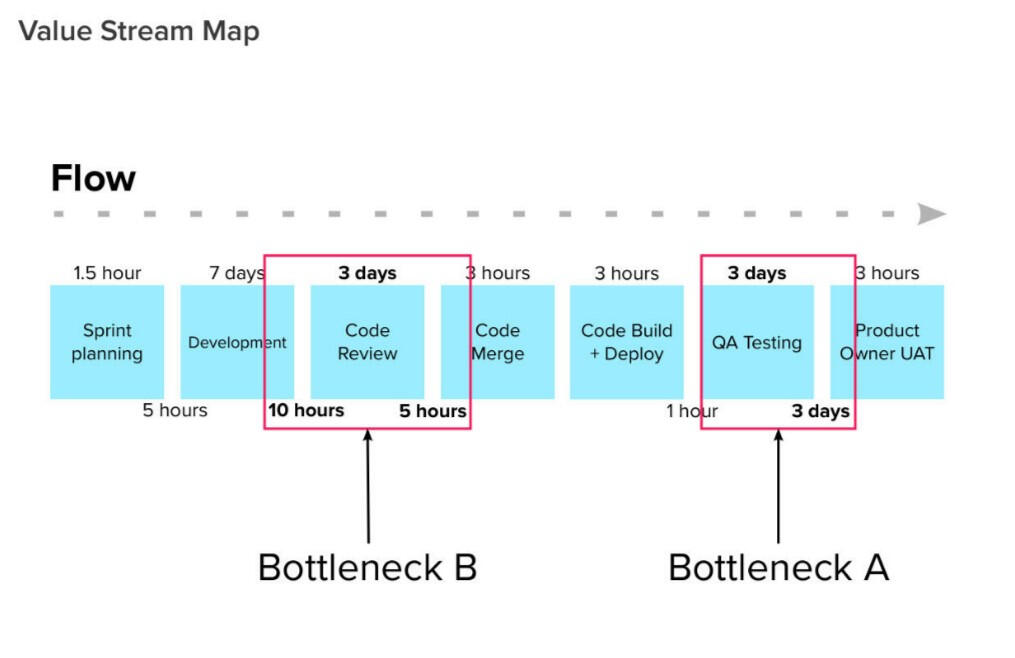
Guide your team, in-person or remotely, in co-creating clear visualizations of your work processes.
Re-connect business and technology by re-framing value delivery with alignment and empathy.
Understand how to sustain states of psychological flow in the pursuit of increasing the flow of benefit to customers.
Why Now?
Study after study has shown that 70% of digital transformation efforts fail. Why? Not for lack of funding, lack of tools, or lack of effort. Organizations attempting to evolve are limited by their capacity to implement systems of change to adopt new capabilities.
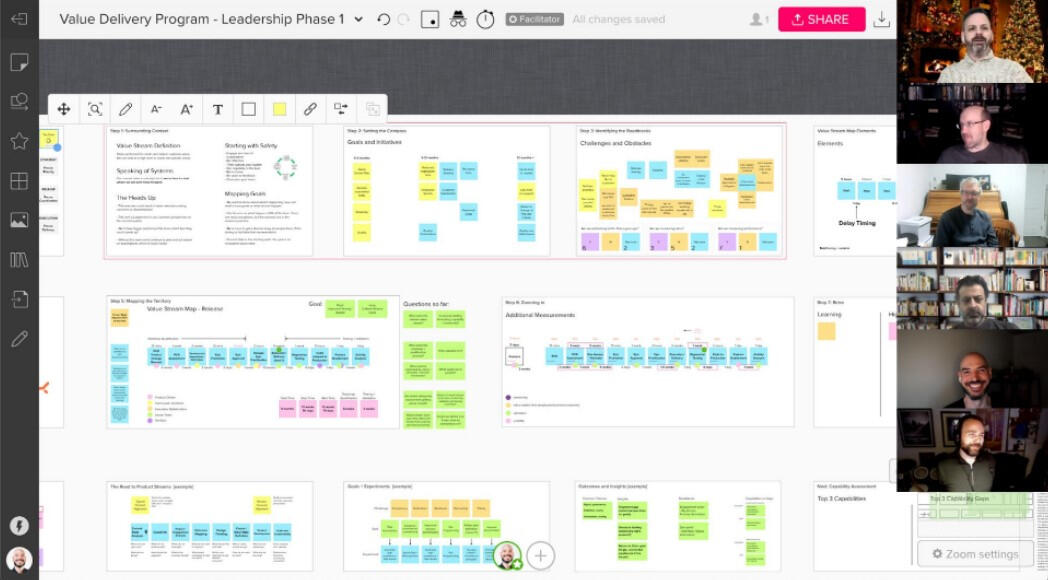
An open set of adaptive practices for teams of all types.
It blends step-by-step instruction with case studies on success (and failure).
See how flow can unlock not just agility, but alignment and sustained performance at scale.
Meet the Authors
Steve Pereira
Steve is obsessed with making tech human, and leveraging it to deliver continuous value.
Steve Pereira has spent over two decades improving the flow of work across organizations. He’s worked through tech support, IT management, build and release engineering, and as a founding CTO for enterprise SaaS.He serves as lead consultant for Visible Value Stream Consulting, as a board advisor to the Value Stream Management Consortium, Chair of the OASIS Value Stream Management Interoperability technical committee, and co-founder of the Flow Collective to bring flow-focused professionals together. Since 2017, he has been developing and facilitating Flow Engineering to make flow improvement in large organizations accessible, collaborative, and actionable.
andrew davis
Chief Product Officer at AutoRABIT and the author of Mastering Salesforce DevOps. He’s a Salesforce architect, developer, and product leader with a focus on the human side of software development.He’s been the leading figure in introducing DevOps concepts to the Salesforce world. Trained as an engineer, he spent fifteen years as a Buddhist monk, teaching meditation and personal transformation and helping develop communities of practice. These days he studies the intersection of business, technology, and psychology through systems thinking. He is co-founder of the Center for Harmonious Living with his wife, Ashley, to promote healthier ways of approaching work and life.
From the Readers
Why we Wrote Flow Engineering
By Steve Pereira & Andrew Davis (Long Form)We have both traveled very different professional journeys. Yet from our experiences and our dialogue, three big ideas have emerged: the need for value, clarity, and flow in our work. These ideas felt familiar to both of us, but we’d never been able to articulate them before. Over the course of our careers, we have found that many of the people we’ve encountered have had similar moments where an ah-ha or piece of the puzzle has fallen into place, and they, too, recognized the need for value, clarity, and flow. Here are our stories, which might feel familiar in some way, shape, or form to your own. They provide the backstory to how the practice of Flow Engineering came to be.
Steve
I’ve always had a fascination with complex problems. I grew up among mysterious, discarded technology collected through my father’s work at Bell Telecom. By tinkering with these remnants, I developed confidence in my ability to tackle technical puzzles and get things working, and I became comfortable acting with a healthy degree of uncertainty. But I still sought out frameworks and playbooks to guide my instincts. Sometimes I even read a manual!I broke into tech with a support role at IBM and worked my way from there into desktop support for a brokerage firm, IT management, infrastructure automation, build and release engineering (on compact discs!), and eventually the cloud.After attending my first DevOps meetup in 2011, I felt like I had found a community of fixers like me. I was deep into build and release engineering, Agile infrastructure, and automation in a highly project-oriented organization skeptical of Agile methods. There was a massive rift between business and tech. At DevOps meetups, I heard my challenges echoed by everyone working in large organizations:
missing connection between efforts and value
lack of clarity on goals, priority, organization, workflow, etc.
constant interruption, meeting overload, misalignment, and crippling dependencies
I shared experiences of working on complicated and extensive automation that would never be used, attending endless meetings to analyze and explain technical and architectural decisions, and seeing conflict between every department.I took over the DevOps Toronto meetup in 2014 and started to curate a delicate balance between technical and organizational subjects, gravitating toward an area where I saw lots of challenges and little content: the socio-technical aspect of DevOps. I would hear time and time again from individual contributors that they could do such amazing things if only X would get out of the way. X was always something like management, meetings, Scrum rituals, product folks, or sales folks. What I started to hear was that problems with friction, confusion, obstacles, buy-in, dependencies, and misalignment were repeated themes.During this time, key learnings began to emerge within the DevOps community. Books like Continuous Delivery, The DevOps Handbook, and Making Work Visible built a foundation of knowledge we now take for granted.DevOps Days, particularly open space discussion sessions, were my way of connecting with others who focused on the gaps: the “glue work” to bridge silos, automate away friction, and reduce toil. I was focused more on the flow of building than on what was being built. After all, tech changed all the time, but the issues of value, clarity, and flow never seemed to.In 2014, I attended the first DevOps Enterprise Summit. It seemed the most practical event in the DevOps space—no tech in a vacuum, no theory without application, and focused on delivering business value. It opened my eyes to what was possible when DevOps was applied in complex environments, and there was honest conversation about the hard problems still to solve. Although the specific words rarely came up, there was a great deal of conversation about value, clarity, and flow.Over the years, I often consulted and advised founders and leaders as they hit familiar challenges and inflection points. They’d ask for help with pipeline automation, platform implementation, infrastructure management, etc. Their actual needs appeared after a quick conversation: confusion and chaos from growth, misalignment and conflict with stakeholders, and waste and dependencies impacting delivery. I didn’t realize this at the time, but value, clarity, and flow were sore spots in every case.As I stepped into leadership as a CTO, it became increasingly important for me not only to understand the workings of things but to articulate them effectively to my team, to my executive peers, and to that most charitable audience, the board. I had to illustrate the workings, assumptions, and importance of different decisions and how they fit together. I had to communicate with folks who couldn’t care less how the tech worked and only cared what we could do with it—and when.I felt the pressure from the board, CEO, VP of Sales, and others to ensure my team was operating at a high level of performance and that we could always prove it. That always depended on strong collaboration with every other role in the executive suite and the collaboration of all our reports.It became increasingly clear as I collided with these challenges that DevOps wasn’t enough to capture the full scope I needed to address. DevOps lacked a language that would resonate with nontechnical stakeholders across the business. Those needs pushed me to a realization that would unlock a new level of performance and change the way I thought about technical leadership forever.My biggest lesson came when a lucky surge in sales exposed the need to reduce onboarding time to meet demand. When you’re shown a waiting list of fifty enterprise customers and then look at your current onboarding processes, the math quickly reveals a painful truth. I knew it took far too long to get new clients up and running, but I had no idea exactly how long it took. The most painful realization came when I realized that nobody—neither my team nor I—knew why it took so long.To try and figure out what was causing this long onboarding time, I created a sort of Value Stream Map—a map that laid out the full sequence of activities involved in value delivery to customers—in Google Sheets, using my rough understanding of the onboarding flow. But this map was still full of blanks, guesses, and question marks.The breakthrough came when I invited my team and other roles to contribute their perspectives. The picture started to form. The numbers started to add up. We could see lead time, cycle time, delays, problem areas, and a clear bottleneck. Beyond the shock of our actual lead time, we were most surprised by how many opportunities we had within our immediate grasp. We could see many easy fixes waiting for simple action.

After a few changes, we were able to reduce onboarding time from six weeks to four days. The effect on my team was an incredible boost in confidence, clarity, and collaboration. But perhaps the most impactful was a sense of control over performance improvement. We went from individually treading water to rowing together in the same boat with a stopwatch to track our progress. We had before and after metrics that we could easily share to show progress and ROI, metrics that sales and the C-suite cared about.

This milestone served as the first lightning-strike moment for me. It also became a business case, highlighting the tangible difference that efficient workflow could make. Because I worked through this method with my team, they learned to apply these practices without me—individually, with each other, and with other roles across the organization. It took the practical act of mapping out the workflow to drive home those key foundational learnings of measuring end-to-end flow and visualization from Continuous Delivery, The DevOps Handbook, and Making Work Visible.I had finally tripped and fallen into insights that had been there all along. When we had something challenging to tackle, we measured the current state and found the bottleneck. When we had to make a decision, we looked at the data. We applied the playbook across multiple workflows, from our data pipeline to continuous integration and continuous delivery (CI/CD) and product development. And all these insights helped us eliminate waste and spend more time on what mattered most.The second lightning strike came when I struggled to share this with folks who cared less about the details than the big picture or folks stepping into the context for the first time. A spreadsheet full of numbers isn’t the most user-friendly interface. Eyes glaze over and interest drains like air from a pierced balloon. To communicate with everyone we collaborated with quickly and effectively, we needed something that was clear enough to enable conversations but would also speak for itself if it was shared with others. I began to play with different visualizations of flow to do that job, and this simplified Value Stream Map is what I began to use.
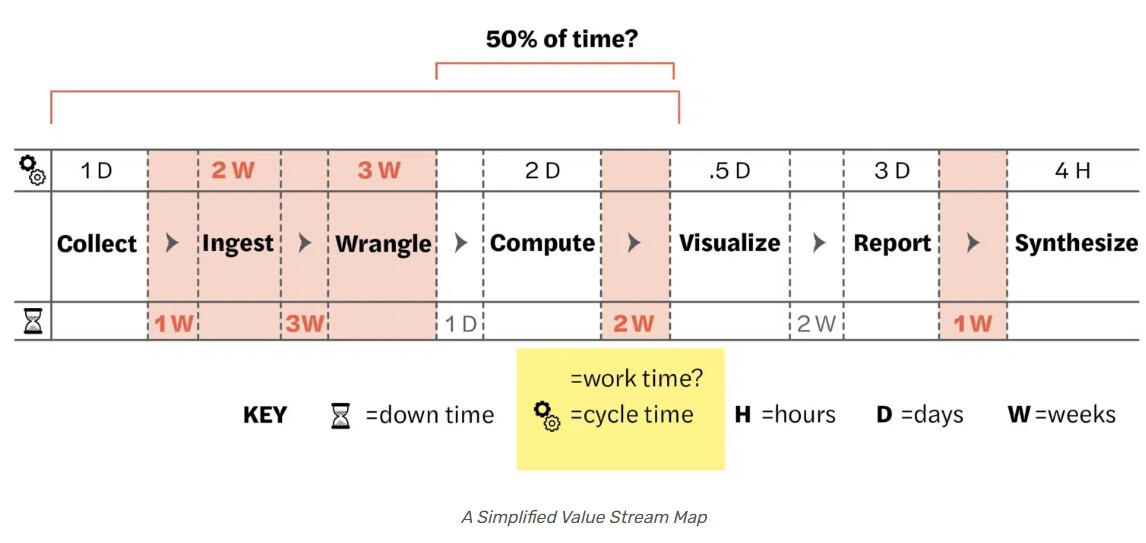
We turned a corner from being an unpredictable, black-box cost center to being a trusted and data-driven technical organization. We started to bridge gaps to sales, product, the rest of the leadership team, and the board with a new sense of clarity and confidence. Flow Engineering is the product of that experience.
Andrew
I think of myself as a full-stack engineer. But most of the world’s problems don’t originate at the software layer or at the hardware layer. Most problems originate at the view and intention layer.After training in engineering, I spent my twenties and thirties as a Buddhist monk. My focus was on gradually rewiring the way I reacted to and saw the world and on teaching others to do the same. My goal was to reframe my motivation away from chasing my own short-term benefit and toward acting with a good motivation to nourish the social network around me.My fellow monks and nuns were a community of incredibly good-hearted, dedicated people who had forgone other careers and devoted their lives to building an authentic community of practice and helping people improve their inner peace. We worked in the absence of money, prestige, relationships, and most other comforts. That does a lot to filter for sincerity. I came to assume that those I work with should be driven by a sense of purpose, benevolence, and passion. The daily practices of meditation and chanting instilled in us joy and enormous patience. We worked like athletes, striving to make every word and action count, repeating the same trainings day in and day out.This is where I developed my passion for building clarity. The payoff in these practices was in the form of insights, new realizations, and understanding. This journey of discovery and learning was a far more valuable reward than money, comfort, or excitement. I regarded the activities of daily living, including making money, as a necessity similar to going to the bathroom: something that needed to be done but not something to waste more time or energy on than necessary.For fifteen years, I dedicated all of my time and effort to trying to develop the spiritual communities I was part of. But optimizing for hard work is different from optimizing for impact and effectiveness, and I felt far less effective than I wanted to be. It was clear that just working hard and with good intention did not ensure that the work would be effective and sustainable. I had retrained myself to value the organization and our students but had overextended and devalued my long-term well-being.In 2014, I left the life of a monk, in part to learn more about how effective organizations were run. I wanted to understand how to make wise use of people’s precious and limited time and energy and how modern management techniques could be harnessed to create a stable, sustainable flow of benefit for others.A lifelong technologist, I reentered the workforce as a developer with a focus on Salesforce.com, a technology I had implemented for one meditation center. I joined a consulting firm and was quickly tasked with a job no one else wanted to do: the Salesforce deployments. At that time, little information and few tools existed to automate such processes. I gradually realized there must be a way to automate away the toil and free up more time for the creative, interesting parts of the work.This realization inspired me to investigate how techniques like version control, continuous integration, and automated testing could be brought to the Salesforce platform. I knew if we could improve these processes, we could reduce the confusion and inefficiency that was so common for me and my fellow developers.In 2016, a colleague pointed me to the State of DevOps Reports, which I studied meticulously. I started watching videos by Jez Humble to understand technical concepts. But as I listened, I noticed that many of his insights were on the nature of human interactions around software development. Again and again, he redirected credit and blame away from individual engineers and toward the system they were working in.I started to realize that there was a community within software development focused on human and social transformation. I read Continuous Delivery by Jez Humble and then followed Jez’s influence into topics like product management and his book Lean Enterprise. That’s where I first became aware of Value Stream Mapping and began to lead Value Stream Mapping exercises and design Value Stream Management systems. Everywhere I looked, it kept coming up as a theme.In 2018, I attended my first DevOps Enterprise Summit and had my mind blown hearing Dr. Christina Maslach explain the origins of burnout, Dr. Steve Spear explain the ways in which Toyota revolutionized the manufacturing industry, and the CEO of Compuware talk about engineering their turnaround. The content irreversibly expanded my sense of the role that IT could play in making organizations more effective. I felt like I had found my people in the DevOps community.At the 2020 DevOps Enterprise Summit in Las Vegas, I attended a Lean Coffee on Value Stream Mapping that Steve was hosting. Participants were curious about how to move from talking about Value Stream Mapping to actually applying it in their organizations. The topics of the day included how to get started, what resources could guide the practice, and where it could be applied. Those questions are no less relevant today. In an increasingly distributed, cross-functional, collaborative world, shared clarity is rarer than ever.Soon after the event, Steve and I reconnected. We both agreed that tech leaders needed further guidance on this topic and that we could team up to close the gap. We started meeting for three-to-four-hour jam sessions on weekends. We both shared a preference for digital collaboration tools like Mural or Miro, which provided a spacious canvas for our conversations to emerge and insights to coalesce.Our dialogue revealed an enormous amount of overlap in our interests. It was fantastic to find a collaborator with a common passion. By mapping out our ideas, experiences, and understandings, we built a shared environment that we could easily discuss, revisit, and refine over time.Early on, we both agreed on the importance of shared clarity and how much clarity was lost in typical team interactions. It quickly became a recurring theme in our work together. Lack of clarity was accompanied by lack of alignment around business value. These deficits combined to create a lack of individual and collective flow. Value, clarity, and flow came up day after day.Steve had already started organizing his thoughts into the Flow Engineering scaffold. Our conversations deepened and expanded the relevance of these practices into an open, adaptive, collaborative series of practices that can help align teams around value and move them from complexity to clarity, from friction to flow. We bring these practices to you in this book.
Who This Book is For
We’ve written this book for our peers working in technology in large enterprises. However, we’ve applied and seen the techniques described in this book in contexts far beyond our immediate frame of reference. It’s easy to adapt and tailor to varied situations. It’s flexible enough to help teams of any skill level, and it’s robust enough to be used for ambitious process improvements or day-to-day problem-solving.We’re specialists in digital product development and delivery, but we’ve seen the need for value, clarity, and flow throughout many roles, industry verticals, levels of hierarchy, and stages of growth and scale.This book is written for professionals familiar with the basics of Lean and Agile but unclear how to start, restart, teach, or make measurable progress with confidence. This is a book for curious problem-solvers struggling to help their teams or organizations see the big picture. This is for those grappling with complicated frameworks and operating models and wondering, “How?”We’re aiming to help mid-level leadership in complicated enterprises, but we’ve applied and seen this material used in a broad range of roles and contexts like product management, Agile coaching, technical leadership, architecture, marketing, sales, project management, design, customer success, and more.Why does it work in all these cases? It’s a lightweight, flexible practice of building a path from where you are to where you want to go. Once you’ve grasped the concepts and techniques, you could find yourself applying Flow Engineering in contexts we’ve never imagined. If you’re looking for a clear, approachable, step-by-step system for building value, clarity, and flow across your organization, this book is written for you.
Flow
Your Way
We have some tools to help!
Resources
Now Live!
The Flow Engineering
Immersion Course
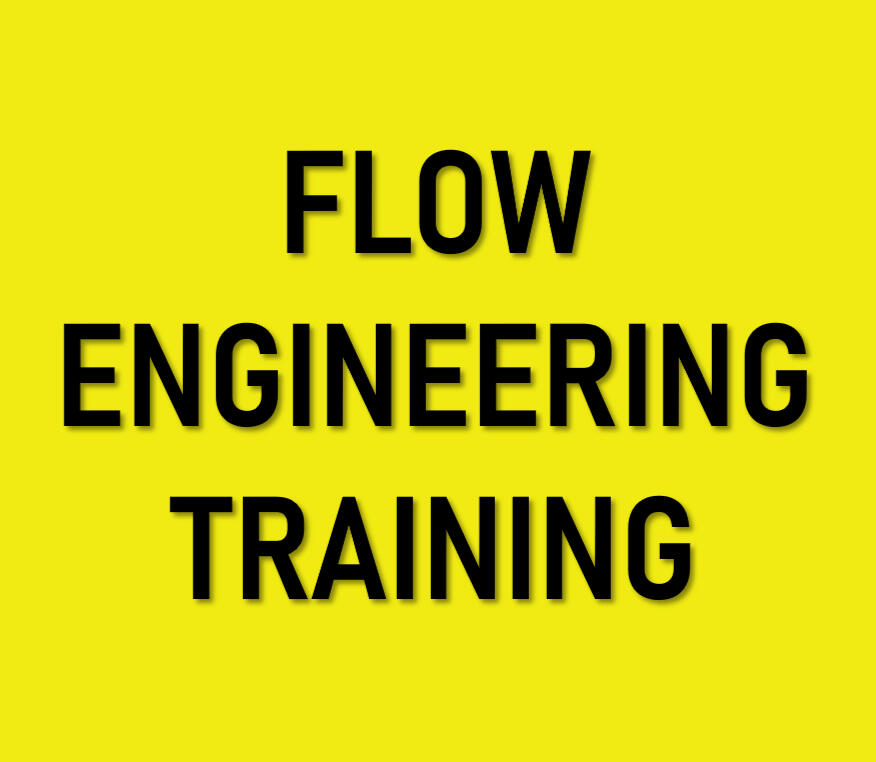
flow engineering Training - overview
Considering a Flow Training Session for your team?This PDF provides as overview of our Flow Engineering Training Program to learn everything you need to know about the course. The course can be delivered virtually or in person.This booklet includes a detailed learning summary, an outline of the course structure, and the key benefits of participating.
FREE

flow engineering Mapping Template - For Mural
Our Free Flow Engineering Template for Mural is designed to help you effectively map and analyze key aspects of your workflows.With five essential maps —Outcome Mapping, Value Stream Mapping, Dependency Mapping, Future State Mapping, and Flow Roadmap — this template provides a clear structure for your sessions. It’s a practical tool for visualizing processes, identifying dependencies, and planning future improvements, helping your team focus on what matters most for better outcomes and efficiency.Ideal for anyone looking to get started with Flow Engineering.
FREE
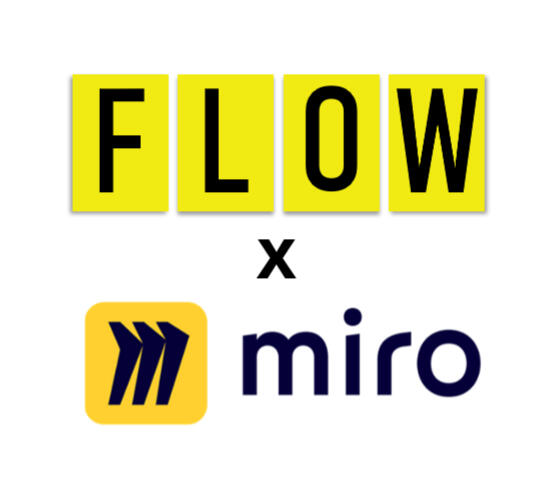
flow engineering Mapping Template - For Miro
Our Free Flow Engineering Template for Miro is designed to help you effectively map and analyze key aspects of your workflows.With five essential maps —Outcome Mapping, Value Stream Mapping, Dependency Mapping, Future State Mapping, and Flow Roadmap — this template provides a clear structure for your sessions. It’s a practical tool for visualizing processes, identifying dependencies, and planning future improvements, helping your team focus on what matters most for better outcomes and efficiency.Ideal for anyone looking to get started with Flow Engineering.
FREE
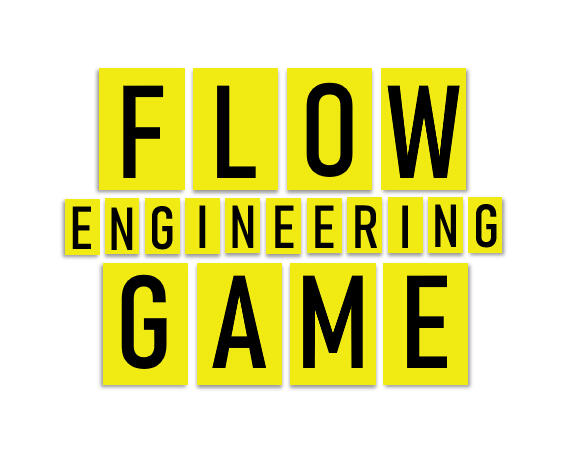
The Flow Engineering Game
By Steve Pereira & Andrew Davis
Get started with the easiest entry point to Flow. This simple exercise serves as a fun, quick, and effective introduction to Value Stream Mapping and the core of Flow. Using a fictional example stream anc randomly generated data, we can quickly introduce collaborative mapping, current state analysis, and future state improvements with groups of any size — whether they work together or not -- in just 30 minutes.
The game-like workshop serves as a warm-up for real mapping, so participants can learn the basics before applying the technique to their own context. Using fictional data also allows us to avoid getting caught up in the detail or politics of real life before we've established the right context. We focus on data first, and random data allows us to forget about precision and accuracy and just observe what the map is showing us. This also works to demonstrate mapping to participants from varied contexts, where they don't share a common stream.
It works best with groups under 5, but you can have as many groups as you like!
FREE
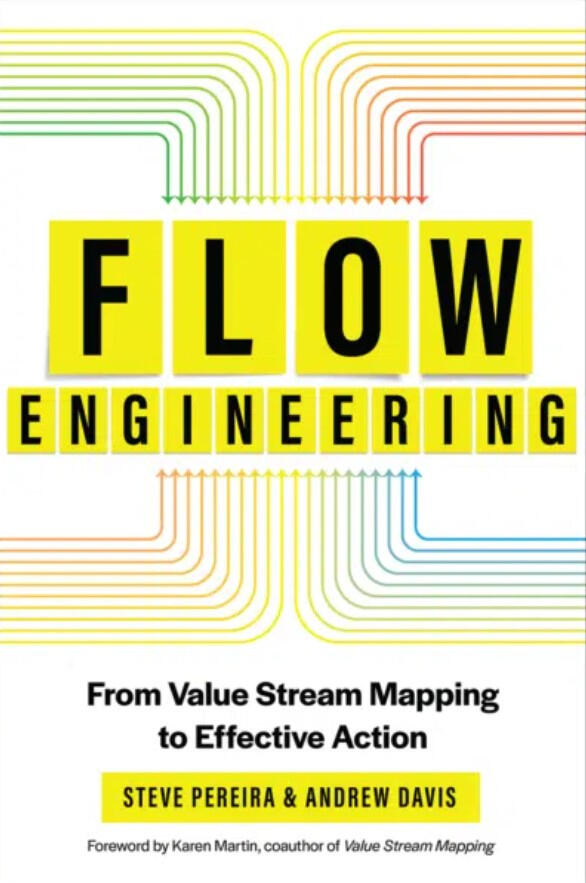
flow engineering
By Steve Pereira & Andrew Davis
Flow Engineering is a practical guide to using value stream mapping techniques to align teams, unlock innovation, and optimize performance.Based on foundations from Value Stream Mapping, cybernetics, and the Toyota Production System, Flow Engineering’s lightweight and iterative practices build the value, clarity, and flow required for effective collaboration and collective action. Written by Value Stream Mapping experts Steve Pereira and Andrew Davis, Flow Engineering provides a step-by-step guide for running fast-paced mapping workshops that rapidly build shared understanding.Using five key maps to facilitate collaborative “flow conversations,” Pereira and Davis show how teams can surface tangled process dependencies, conflicting priorities, and unspoken assumptions that grind progress to a halt. The result? A clear roadmap owned by the people doing the work to accelerate innovation cycles, optimize workflows, and achieve more effective coordination.
$0.99 - $42.00
the Lean-agile way
By Cecil "Gary" Rupp, Richard Knaster, Steve Pereira, Al Shalloway
The Lean-Agile Way offers proven strategies to streamline processes, enhance products, and improve service delivery.You’ll start with an introduction to foundational Lean and Agile practices, recognizing the significance of digital enhancements in modernizing business processes. As you progress, you'll learn VSM techniques to identify and prioritize work and investments to provide maximum value to customers. Moreover, you'll grasp Lean-Agile practices aimed at promoting collaboration among teams and ensuring the continuous flow of product-oriented deliveries tailored to address customer needs. Finally, you'll gain executive-level insights on how organizations must access timely information for decision-making and foster a culture of continuous business transformation.Armed with this knowledge and a robust toolkit, you'll be empowered to drive meaningful change, optimize resources, and stay ahead in the rapidly evolving marketplace.
$21.99 - $39.99
THE FLOW COLLECTIVE
Meeting Wednesday, 5pm ET
The Flow Collective is a private, invite-only peer group of professionals passionate about improving how work and information flow across organizations. Our members are driven leaders who come together to share ideas, tackle challenges, and grow in a supportive, high-trust environment.Founded to fill the gap for a community focused specifically on organizational flow and performance, the Flow Collective connects through a private Slack group and weekly video meetings, offering space for honest conversations, shared insights, and lasting relationships. We also publish a newsletter to capture and reflect on what we learn together.Membership is intentionally selective and grows slowly to preserve value and alignment. We seek members who are not just curious and passionate, but also committed to giving more than they get. If that sounds like you—and you’re vouched for by a current member or partner community—we’d love to hear from you.
FREE!
THE FLOW ENGINEERING IMMERSION COURSE
By Steve Pereira & Andrew Davis
Learn how to enhance collaboration and performance in large-scale organizations through Flow Engineering - a systematic approach for identifying value, building clarity, and enabling smooth delivery across teams. This comprehensive course teaches you five powerful mapping techniques that help teams visualize workflows, uncover constraints, and implement targeted improvements. Through hands-on exercises and real-world examples, you'll learn how to:
- Align teams around clear, valuable outcomes
- Map and measure value streams to identify bottlenecks
- Analyze dependencies that impact performance
- Design improved future states
- Create actionable roadmaps for changeCourse length: 7 modules consisting of 31 lessons & 7 exercises
Estimated total runtime: 6 hrs, 12 minutes
$250
THE FLOW ENGINEERING SHOW
Hosted by Steve Pereira & Andrew Davis
Also known as "The Value Stream Show"A podcast for leaders and managers of software teams looking to make an impact in their organizations and the world.Computers are hard. People are harder. And your job is to make them all work together. The Value Stream Show is right there with you, at the intersection of technology and humanity. We bring clarity to the challenges software teams face, and guide you into the emerging practice of value stream management. Our listeners learn to dissect what’s really happening in their organizations so they can move fast, have fun, and make an impact.
Listen for free anywhere you listen to podcasts!
The 2nd Annual
Flow Leadership Retreat
February 8-13 in Cancun, Mexico
Recharge, reinvent & return to Flow
Immersive Flow Engineering for LeadersEARLY BIRD FOR 3 WEEKS ONLYJUST 6 SPOTS LEFT!
Welcome to our next unique & exclusive retreat nestled in the serene beauty of a private luxury villa in Isla Mujeres, a small island just off the coast of Cancun, where innovation, collaboration, and personal growth converge.This immersive experience is designed for leaders dedicated to mastering the art and science of Flow. We'll dive deep into direct practice, case studies, and challenges. Together, we’ll explore the latest strategies and tactics to optimize performance, unlock new potential, and design systems that create sustainable, high-performing flow.
“The Flow Retreat is the reset I didn’t know I needed: practical, reflective, and transformative. It’s a hands-on workshop that brings systems thinking, agility, and flow together in real-world settings and conversations, something you can you can bring back to your teams.
Set in a beautiful, secluded environment, it gives you the space to think clearly and deeply, in a way no office, conference room, or virtual event ever could.
You leave with more than notes; you leave with hands-on experience, clarity, connection, and a network of peers who share your purpose.”
- Phil Clark, VP of Engineering & Flow Coach
Join us for a journey of learning, connection, and tangible growth, all in an environment that cultivates creativity and clarity.
Stop Sawing & Sharpen the Saw - The retreat provides a valuable opportunity to step away from daily work and focus on professional growth, collaboration, and flow improvement.
Ideal Setting for Deep Work - A remote oceanfront villa created an inspiring, distraction-free environment for both productive discussions and relaxation.
Diverse and Deeply Engaged Cohort - Participants come from various professional backgrounds, enriching discussions with different perspectives and experiences.
Flow Engineering in Action - The retreat emphasizes hands-on learning through organic discussions and direct action, allowing for deep dives into leadership and process optimization.
Explore Key Aspects of Flow in Detail - Metrics, Mechanisms, Complementary approaches, Value, Facilitation, Organization, Change & Improvement
DETAILS:
Date: February 8 arrival -> 13 departure, 2026
Program days: 9, 10, 11Location: Isla Mujeres, Quintanaroo, Mexico (ferry from Cancun)Closest Airport: Cancun, Mexico (CUN)
~1hr-1:30hr from the airport (via shuttle/ferry/taxi)Capacity: 8 Double Occupancy Rooms with ensuite bathAccommodations: Private Oceanfront VillaMeals: Included, Prepared on
Site via Private ChefOptions: Quiet spaces, home theatre, home gym, nearby attractions and restaurantsConnectivity: Starlink - 150-360mbps
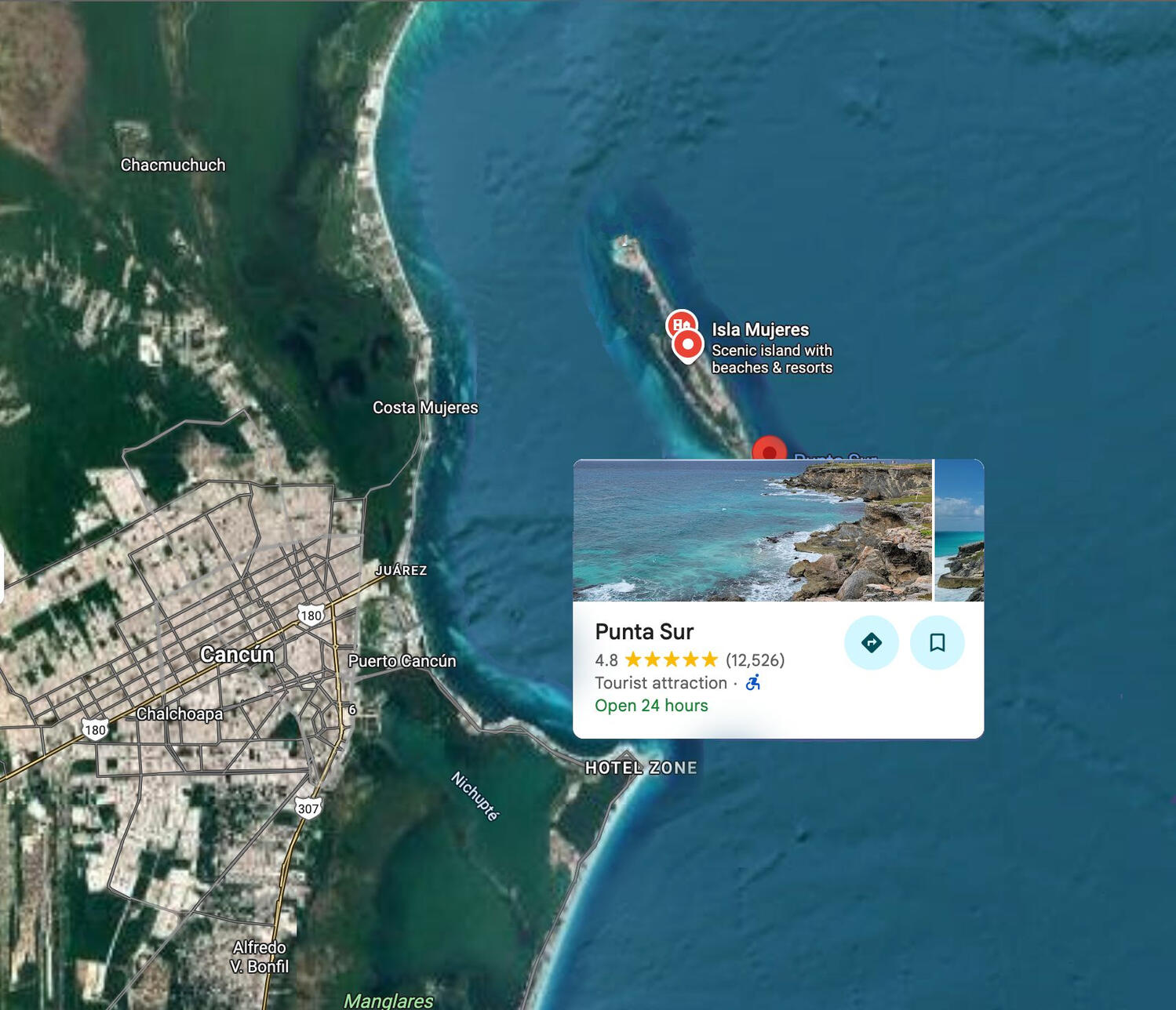
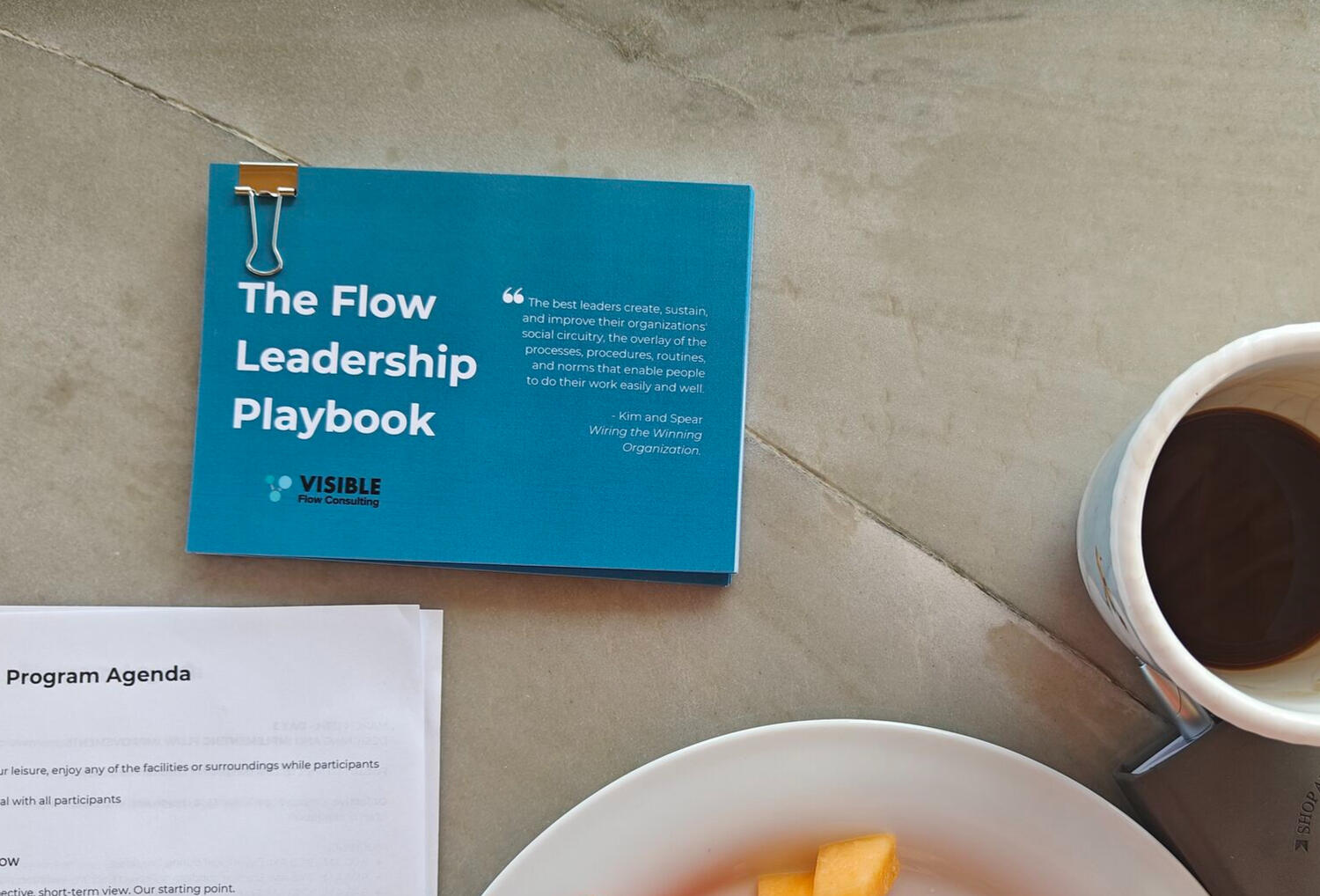
WHO SHOULD ATTEND?
Ambitious learners and innovators looking to apply the practices of Flow Engineering, hands-on, in depth:
Senior Leaders looking to bring quick lean wins & new conversations back to their organizations
Directors & VPs looking to amplify their impact & enable their teams to do more & better with less
Lean enthusiasts & advisors looking for new practical capabilities & opportunities
Specialist Consultants looking to complement their skills & marketability
Agile & Delivery coaches looking to enhance their capabilities and options
DevOps Consultants & Team leads looking for increased business & product credibility & alignment
Project/Delivery Managers looking for more actionable, quick & facilitative wins
Product/ProdOps Managers looking to get more done in less time, boosting throughput and happiness across teams
Facilitators looking for deep experience with a complete & practical workflow improvement system
Operational Professionals looking for more strategic and tactical value
Anyone looking to apply Flow Engineering more deeply and directly
Agenda
3 Full Days of Collaboration + 2 Days of Open Programming
Morning: Structured deep dives & Afternoon: flexible explorationWe tailor the agenda to the needs of the group and pivot when we see value; here are some key takeaways we aim to address:
How to combine and deploy a portfolio of practices including Flow Engineering + User Needs Mapping + Team Topologies
Handling challenging cases and environments - beyond the basics of facilitation
How you can use Flow Engineering in any environment to get better results
Applying systems thinking, TOC, flow, agility, scale, organization together in concert
How to leverage and work around AI to help yourself and organizations
Scaling Flow Engineering from team to organization and beyond
Key migrations & contexts like Projects and Platforms
Meeting clients where they are and moving from there to flow
“This retreat was incredibly valuable for launching my flow engineering consulting practice. I connected with senior leaders and experienced consultants applying VSM in the real world, gaining practical insights that I've used to run workshops in London, Berlin, Lisbon, and online.The retreat helped me get out of my head and leave with ideas I immediately put into practice during the rest of the year: how to position my services as a new business, package offerings for different client needs, and build my brand through quick video content.What stood out most were the real-life accounts from executives, consultants, and practitioners about what happens on the ground, what works and what doesn't.The location was amazing, I left with relationships I’m still growing today, and I’m still getting value from the retreat today, it set the pace for the rest of the year for me.As a Flow Engineering practitioner and service provider, I recommend this to my peers and leaders who want to make the right technology investments”
- Miguel Dias, DevOps & Value Stream Mapping Consultant


Packages (book early to get your choice of room)
Our retreat packages offer the perfect blend of luxury, relaxation, and focused growth. Stay in an oceanfront villa with breathtaking views and high-end finishes, where every detail is designed for comfort and inspiration. Enjoy all-inclusive meals prepared by a private chef, ensuring your body is as nourished as your mind. Unwind by one of the two beautiful pools, relax in the rooftop hot tub, take a jump in the ocean, walk the beach, or simply relax in paradise. Partners and spouses are also warmly invited to join.If you require any special accommodations please let us know.

All rooms have a king bed with an Ocean View & balcony
Retreat Programming (for 1 Guest)
1 King Bed (some rooms have additional sofa bed)
Private ensuite bathroom
Balcony, Ocean View
Breakfast, Lunch & Dinner
Use of All Amenities
Flight & transfer not included
Alcoholic drinks not included
$3,750 USD
First item
Second item
Third item
Fourth
Fifth
Sixth
Text
Text
Text
$4,250 USD
Cancellation Policy & Code of conduct both apply to all registrations
March 2025 retreat Recap
Our first Flow Leadership Retreat in the Yucatan took place in March, 2025, and we couldn't be more thrilled with its success.We learned a lot that we're working into this years edition:
- Starting from where Flow Engineering leaves off to go further and deeper
- More intensive pairing and problem solving to build capabilities, not just practice
- Laser focus on the most critical challenges we face as practitioners and leadersThis year will be more accessible (but still critically remote), more tailored in advance with our cohort, and integrated into a longer term community to sustain the momentum we generate.Last year we had incredible lasting bonds built, and we want much more of that network effect to benefit participants and truly build a strong circle of leaders to advance the practices we work through.We're truly thankful to each and every person who took a chance on this new venture with us, and contributed so deeply to the success of the retreat! We're going above and beyond this year!
Get ready to reinvent flow

Cancellation Policy
Visible Flow Leadership Retreat Cancellation PolicyThank you for your interest in the Visible Flow Leadership Retreat. To ensure clarity and fairness for all participants and effective planning for the organizers, please review the following cancellation policy carefully before registering.Deposit and Payment- A non-refundable deposit of 25% of the total retreat fee is required to secure your spot.
- Full payment must be completed at least 60 days prior to the retreat start date.Cancellation by Participant- Cancellations made more than 60 days before the retreat start date will receive a refund of all payments received minus the non-refundable deposit.
- Cancellations made between 60 and 30 days prior to the retreat start date will receive a 50% refund of the total retreat fee (deposit is non-refundable).
- Cancellations made less than 30 days before the retreat start date are non-refundable.
- Substitutions are permitted if the substitute participant meets retreat requirements and the organizer is notified at least 14 days prior to the retreat.Cancellation by Organizer- The organizer reserves the right to cancel the retreat due to insufficient registration or unforeseen circumstances. In such cases, all payments will be fully refunded.
- The organizer is not responsible for participant travel or other non-retreat expenses.Refund Processing- Refunds will be processed within 30 days of cancellation receipt.Travel Insurance- We strongly recommend participants obtain travel insurance to cover potential losses related to cancellations, travel delays, or other unforeseen events.Force Majeure- In the event of circumstances beyond the control of the organizer (e.g., natural disasters, pandemics, political unrest), the retreat may be postponed or canceled. Participant payments will be applied to rescheduled dates or fully refunded at organizer discretion.Conduct- The organizer reserves the right to remove any participant whose behavior disrupts the retreat experience without refund.
Code of Conduct
Visible Flow Leadership Retreat Code of ConductTo create an inclusive, welcoming, and respectful experience for everyone attending the Visible Flow Leadership Retreat, all participants, speakers, staff, and organizers agree to abide by the following code of conduct:Respect and Consideration- Treat all participants with respect, kindness, and consideration regardless of their background, identity, role, or viewpoints.
- Engage in open, constructive communication, focusing on ideas rather than individuals.
- Welcome diversity of perspectives and foster an environment where everyone feels safe to contribute.Harassment and Discrimination- Harassment, discrimination, or bullying of any kind—including based on gender, gender identity, sexual orientation, age, ability, appearance, race, religion, ethnicity, or any other status—will not be tolerated.
- Unwanted physical contact, attention, intimidation, stalking, abusive language, or offensive jokes are prohibited.
- Retaliation against anyone reporting concerns in good faith is strictly forbidden.Professionalism and Participation- Participate actively and respectfully in all retreat sessions and activities.
- Respect the time and space of others by being punctual and attentive.
- Respect the retreat venue, facilities, and property.Reporting and Enforcement- If you experience or witness any behavior that violates this code, please notify one of the retreat organizers promptly. Confidentiality and respect will be maintained.
- Organizers reserve the right to warn or expel individuals whose behavior disrupts the retreat experience, without refund if expulsion is necessary.
- Decisions by organizers regarding code violations are final and aim to protect the community.Commitment- Registration and attendance imply agreement to this Code of Conduct. Let’s work together to ensure the retreat is a positive, safe, and empowering space for all.
Thank you for joining us!
We'll send you more information soon. Please look for an email within 24 hours or contact us now at [email protected]
Thank you for joining us
Thank you for attending our webinar, we truly hope it was valuable and we look forward to our next meeting!
We'd love your feedback
Please let us know how you enjoyed the content, any insights you found particularly valuable or if there is anything at all we can improve
Book a call with us right now
or send a message right here >>
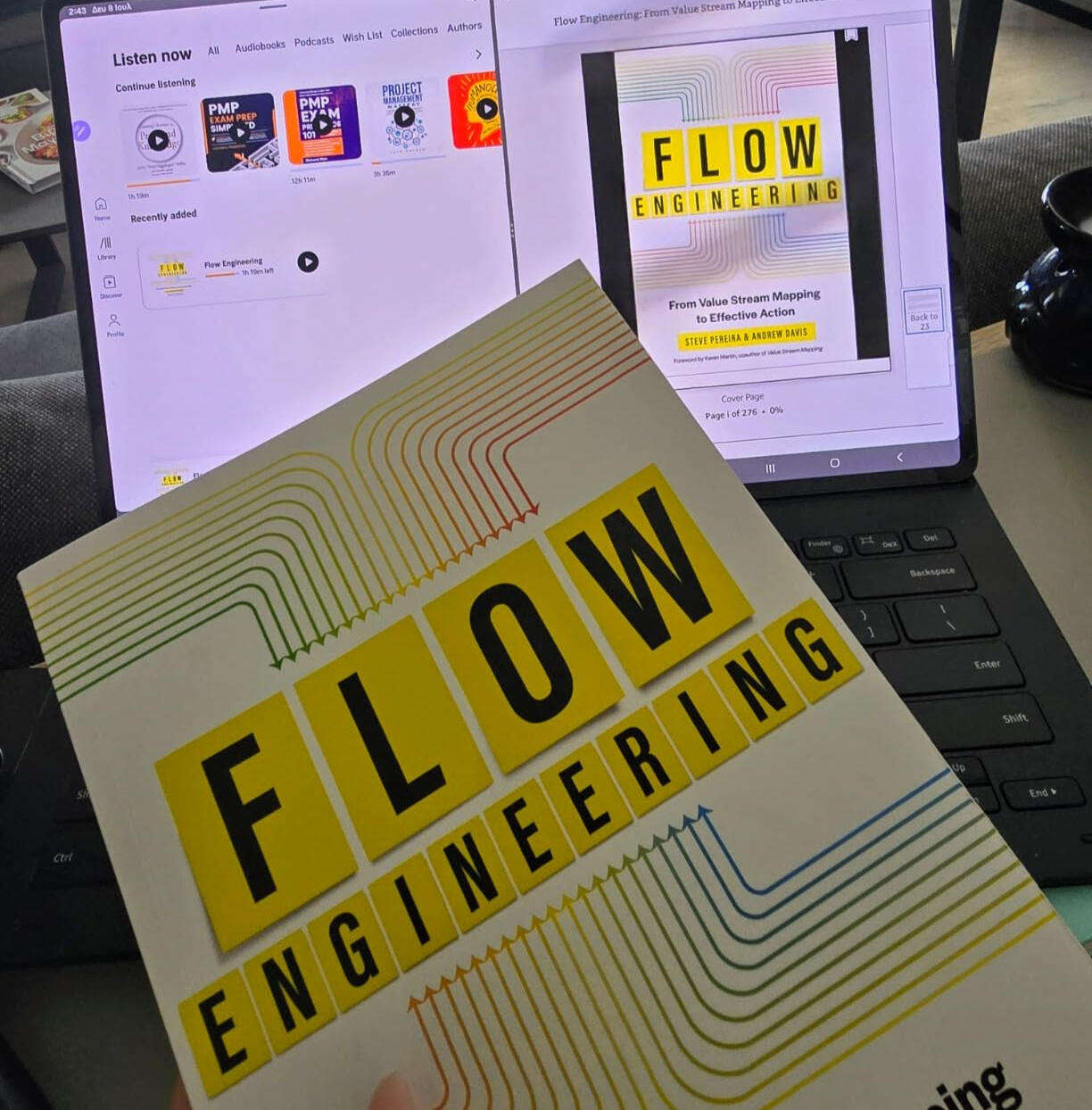
Get in Flow with Us
Sign up to stay up to date with the latest in Flow Engineering!
FAQ's
What is a Value Stream?
It's made of people and what they do to make value happen. It's bigger than a single process. It can be made of many processes (hopefully not too many!).
Value Streams are a system (a single workflow) that live in a larger system (your organization). They often start out messy and complicated, and evolve over time. That is why it's so valuable to step back and look at how they perform to find improvement opportunities. This can save a ton of time and money, uncover new opportunities, and simplify complexity. It also makes it much easier to make decisions about how to improve what you're doing, and what you deliver. The best technique for understanding a value stream is Value Stream Mapping.What is Value Stream Mapping?
A value stream is a mechanism for producing value. Value Stream Mapping is a technique for describing and measuring value streams. This is difficult in knowledge work because you can't just trace a pile of materials all the way through a factory and into a customer's hands. Work flows across many roles in many forms, but we can track a single work item (a story, bug, feature, epic, experiment, etc) through all the activities that produce and deliver it.Why is mapping valuable? Why not just look at the data?
Mapping provides critical visibility into complex software delivery systems that metrics alone can't capture. It enables shared understanding across teams and departments, which is essential for effective collaboration. Visual maps are quickly understood by everyone from new hires to C-suite executives, making them powerful communication tools. Data can take months to get access to, clean, organize, validate, and correlate, and even then it’s still subject to opinion and interpretation. Even without value stream mapping, outcome mapping helps to clarify what data is most valuable, and a flow roadmap translates the data into action.Is this only for software teams?
While focused on software delivery, Flow Engineering can improve outcomes for any process delivering value, including incident response, infrastructure automation, or sales.Who guides this process?
An experienced external facilitator is recommended to provide an unbiased perspective, ask insightful questions, maximize session efficiency and value, and keep teams engaged. An experienced facilitator can save hours of wasted time and effort in each session, and find hidden opportunities worth millions of dollars and months of time.Who participates in mapping?
Include representatives from all responsible parties in the value stream, including leadership. Aim for 12 or fewer participants.When should we do this?
Start as soon as possible to gain performance visibility. Repeat every 6 months to reassess progress and identify new improvement opportunities.How do we get accurate results?
You need accuracy only where it matters. Initial relative measurements are sufficient to find your key opportunities, then we dig into further detail where there’s value. More precise measurements can be added later if needed. We want insights fast, so we focus on just enough detail to understand and act effectively.What does this really look like?
The process involves 4-6 two-hour sessions to define, analyze and design the target value stream. Maps can be combined or kept separate, and easily shared across the organization.
Message Sent
Thanks for reaching out! We'll be in touch soon.
Privacy Policy
Effective Date: November 18, 2024
This Privacy Policy describes how DevOps Ltd., doing business as Visible Consulting ("we", "us", or "our"), collects, uses, and discloses your personal information when you use our services or visit our website. We are committed to protecting your privacy and ensuring the security of your personal information.
Collection of Personal Information
We collect personal information that you provide directly to us when you:
Contact us for inquiries
Request our services
Subscribe to our newsletter
Participate in surveys or promotions
The types of personal information we may collect include:
Name and contact details (email address, phone number)
Professional information (job title, company name)
We also automatically collect certain information when you visit our website, such as your IP address, browser type, and device information.
Use of Personal Information
We use your personal information for the following purposes:
To provide and improve our consulting services
To communicate with you about our services
To process payments and maintain accounts
To send you marketing communications (with your consent)
To comply with legal obligations
To analyze website usage and improve our online presence
Your Rights
You have the right to:
Access your personal information
Correct inaccurate information
Withdraw consent for marketing communications
Request deletion of your information (subject to legal requirements)
To exercise these rights, please contact us using the information provided below.
Changes to This Policy
We may update this Privacy Policy from time to time. The updated version will be indicated by an updated "Effective Date" and will be available on our website.
Contact Us
If you have any questions about this Privacy Policy or our privacy practices, please contact us at:
DevOps Ltd. DBA Visible Consulting
330 Adelaide St. East, Suite 807
Toronto, ON M5A 4S9
Canada
Email: [email protected]
By using our services or website, you agree to the terms of this Privacy Policy. If you do not agree with our practices, please do not use our services or provide us with your personal information
PAGE NOT FOUND 😬
Well, we're not sure what's happened, but let's get you back on track. Check out more information on Visible here or our community content site Visible Thinking here









































